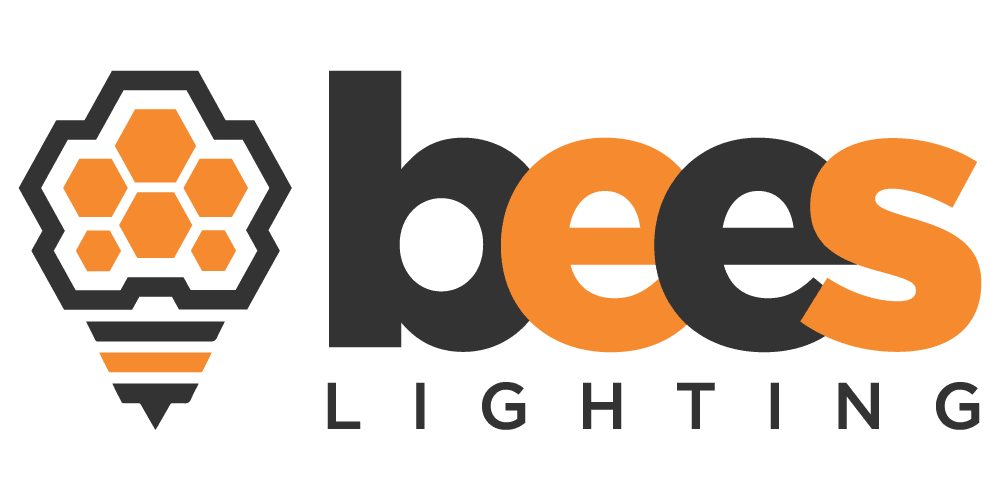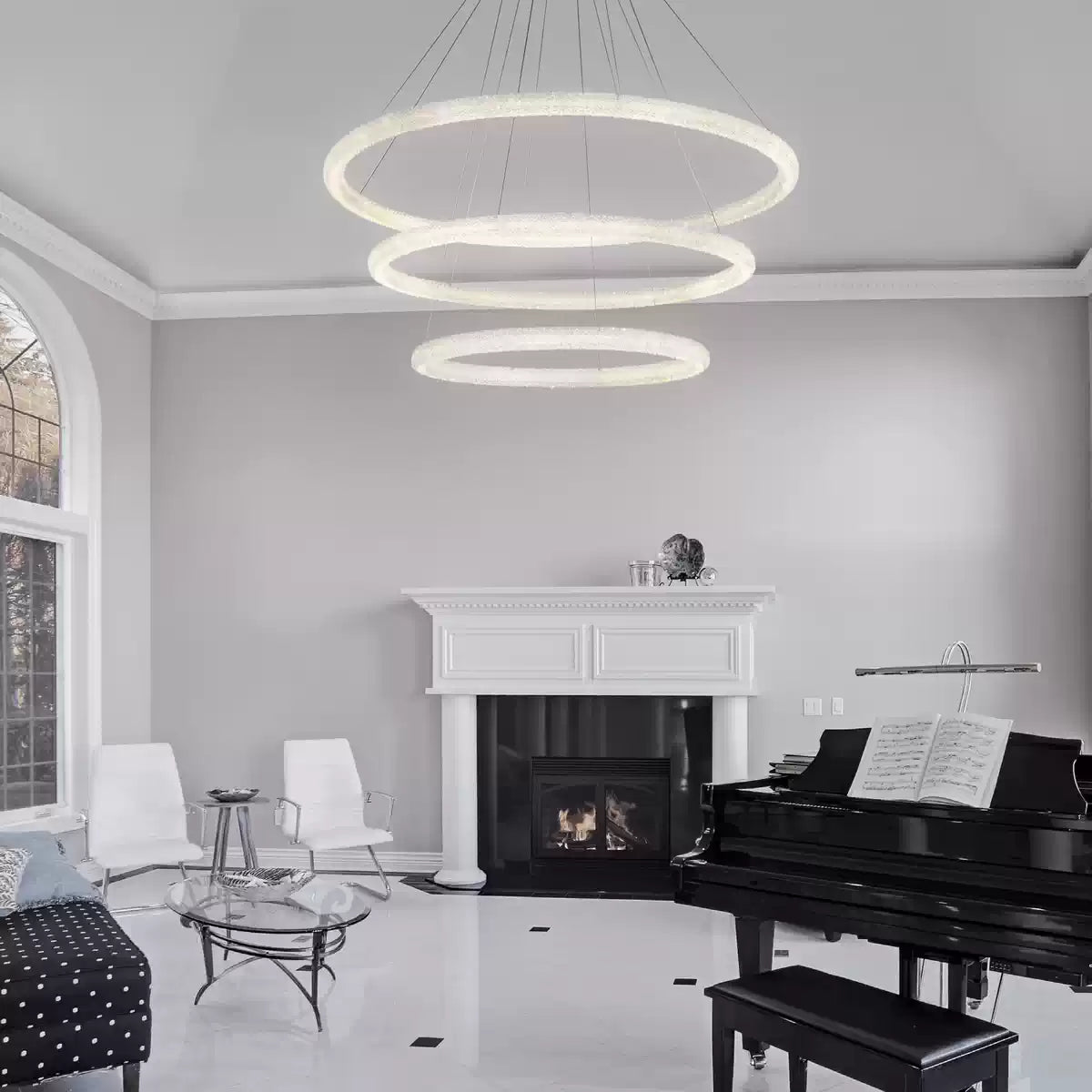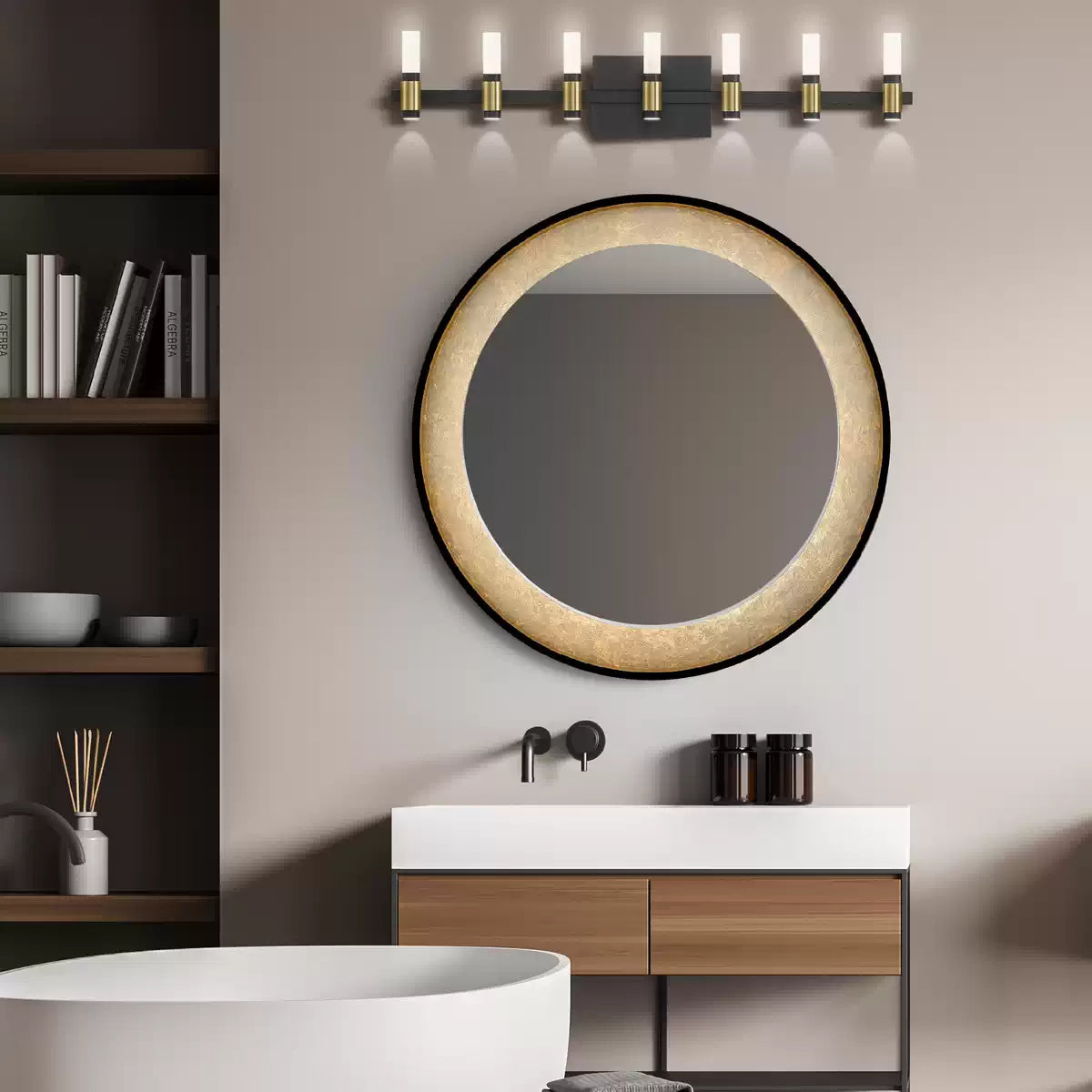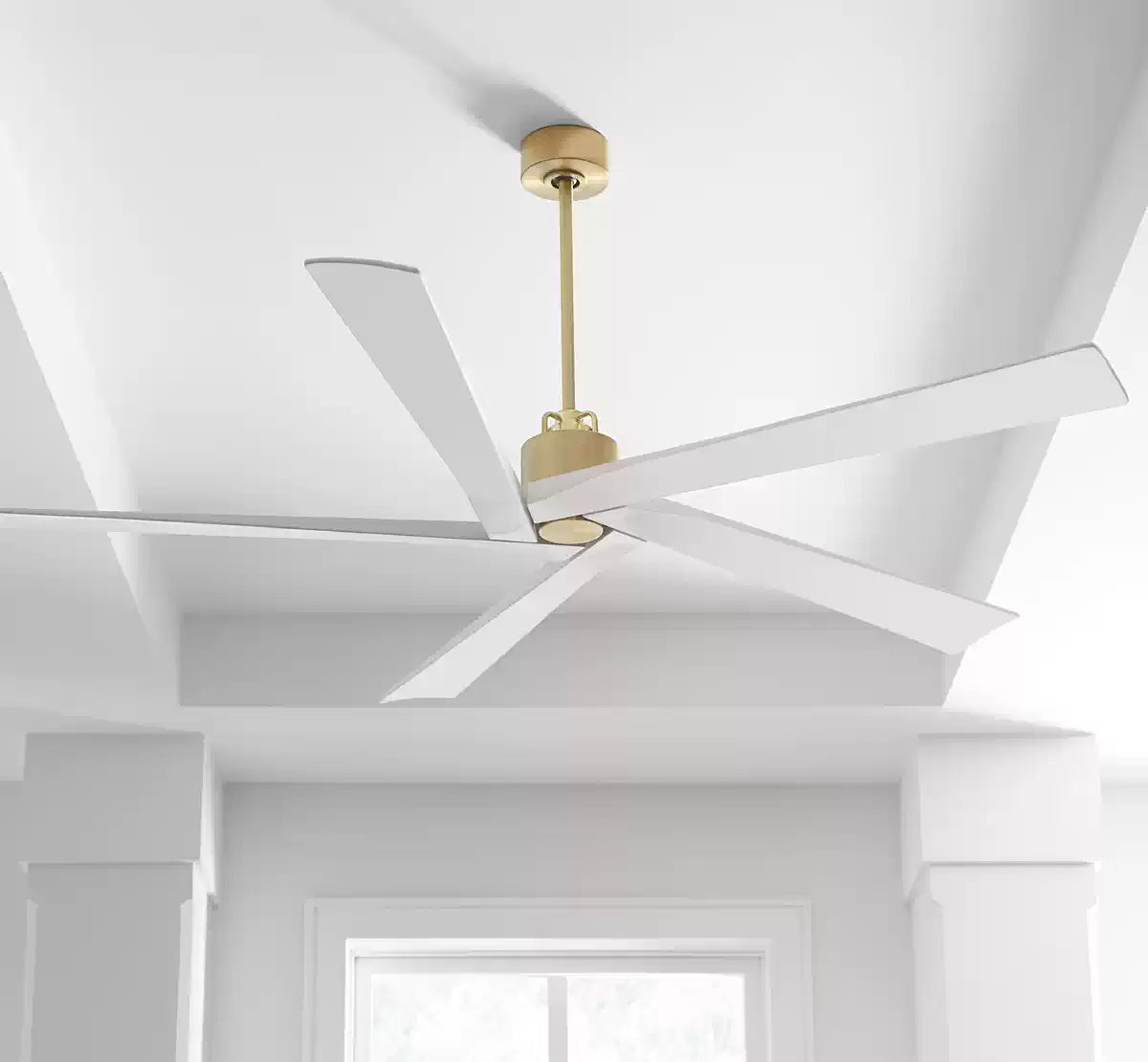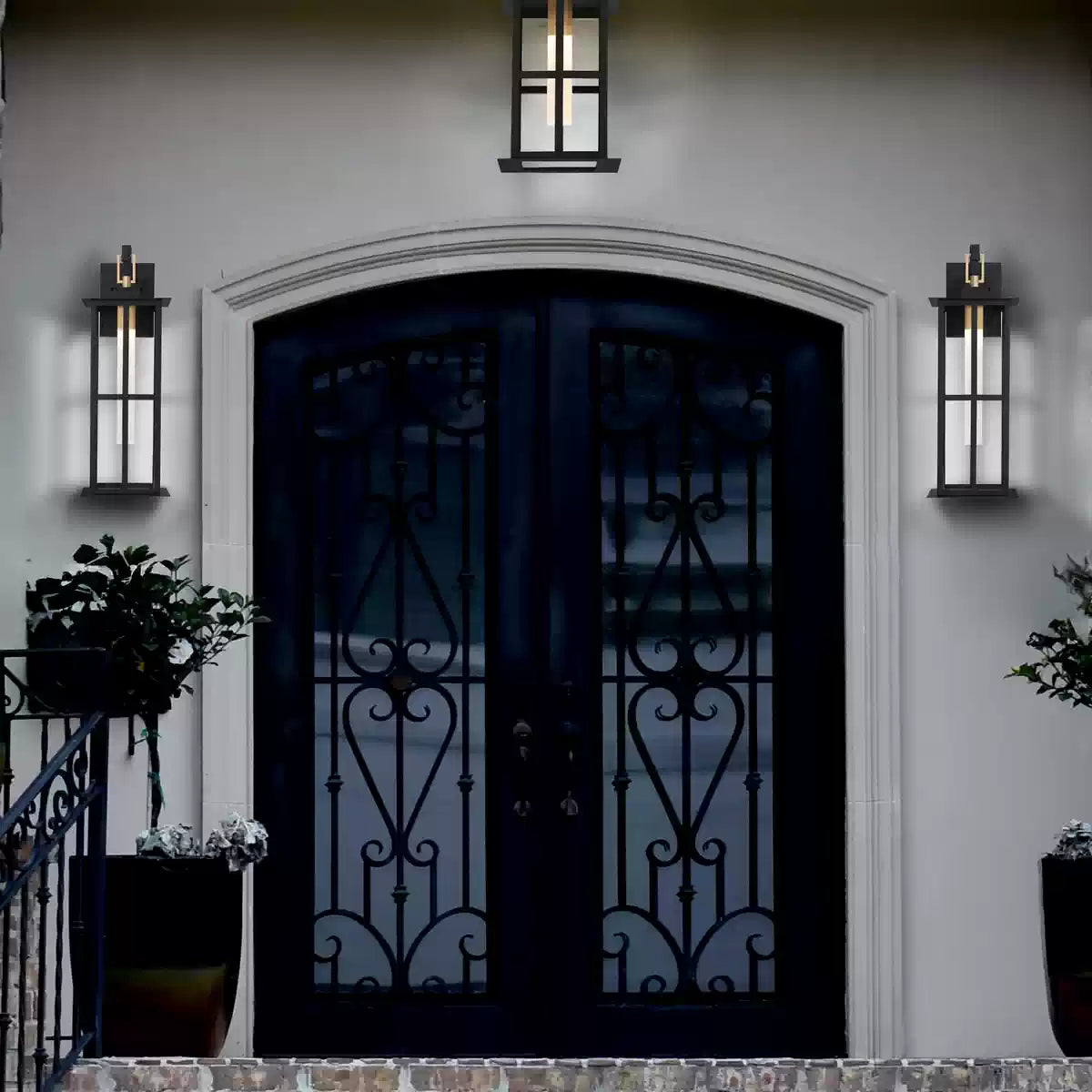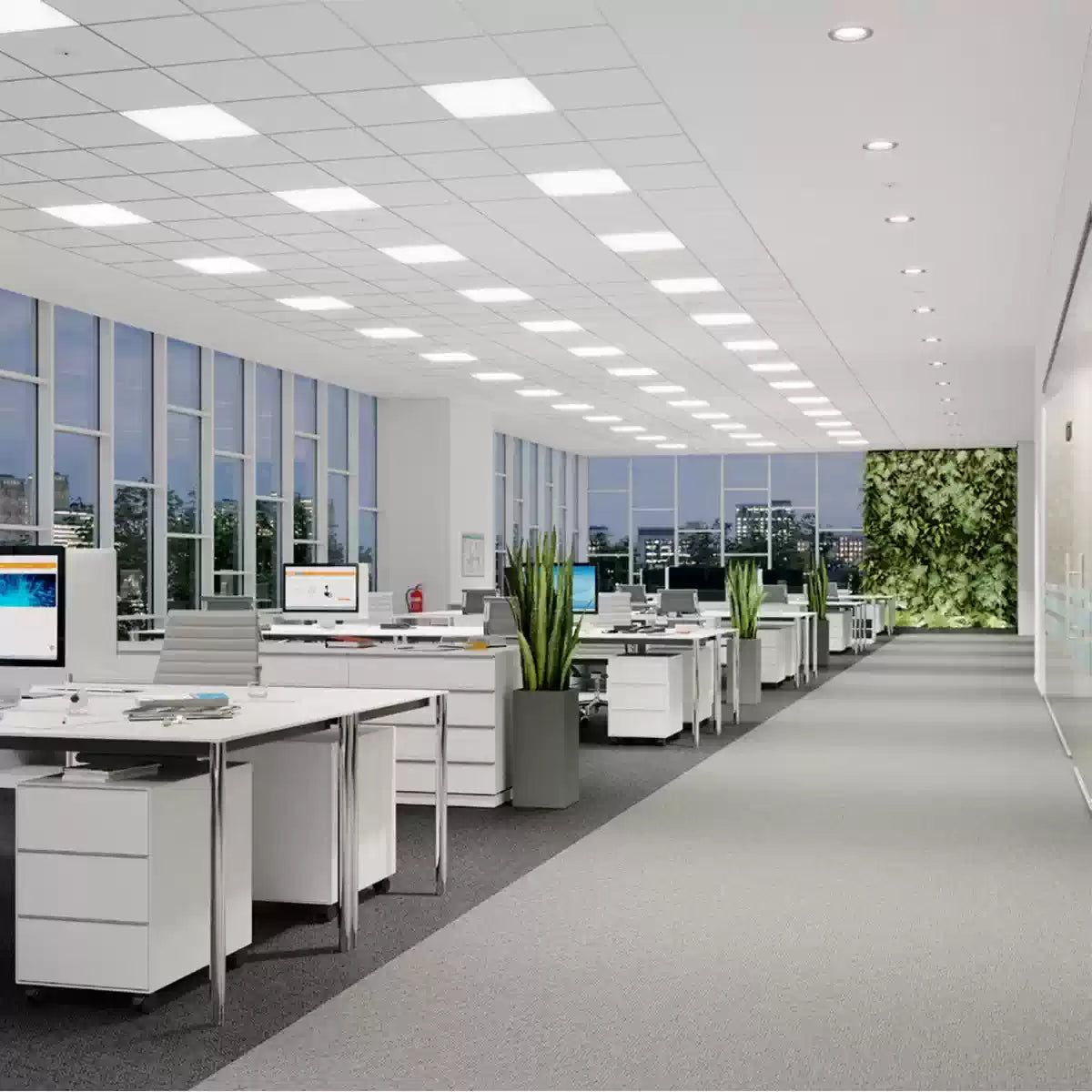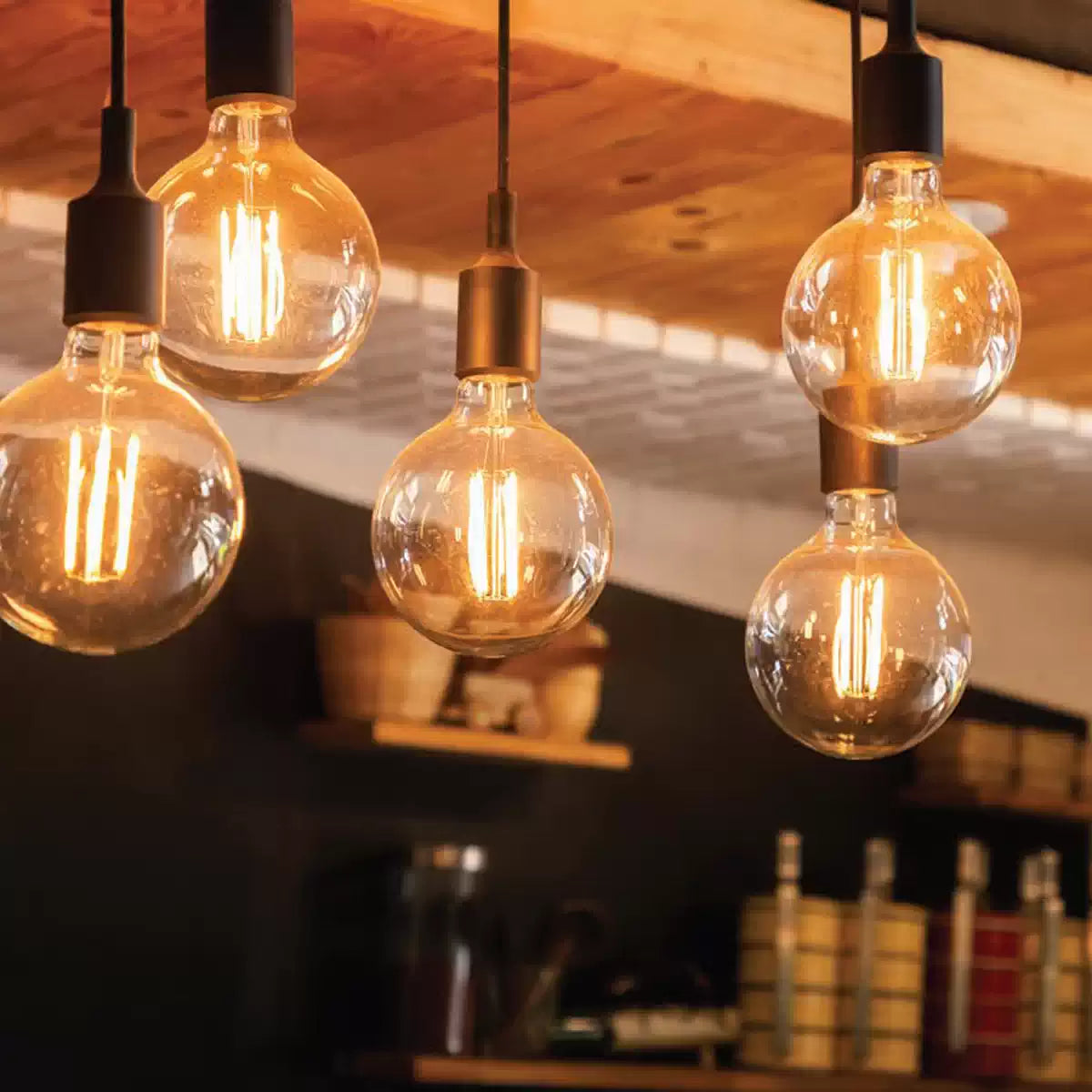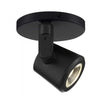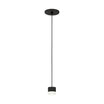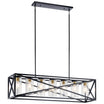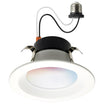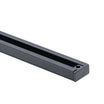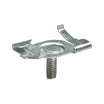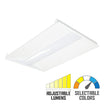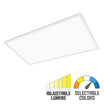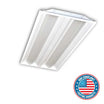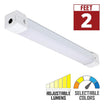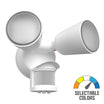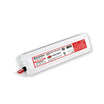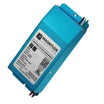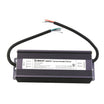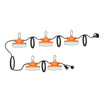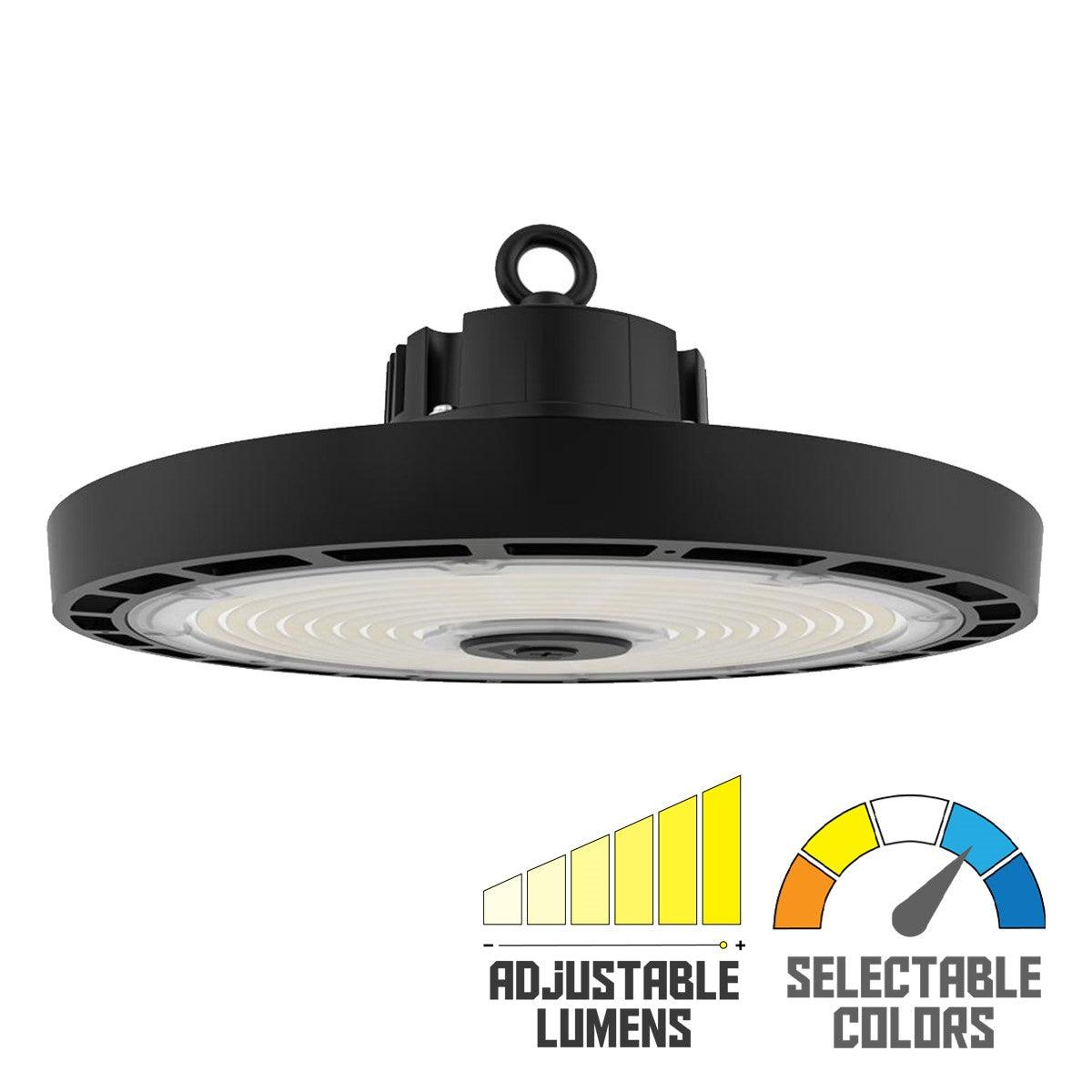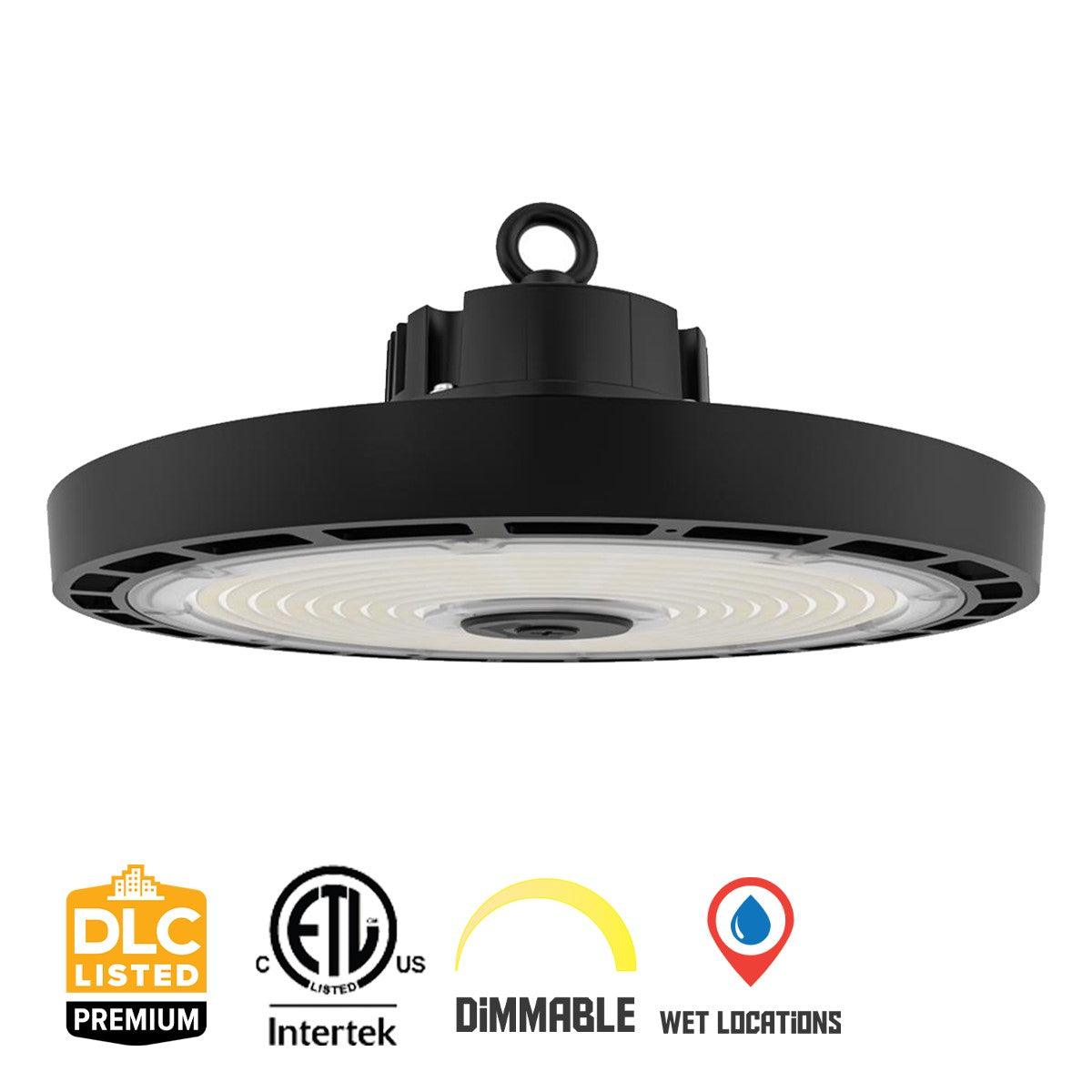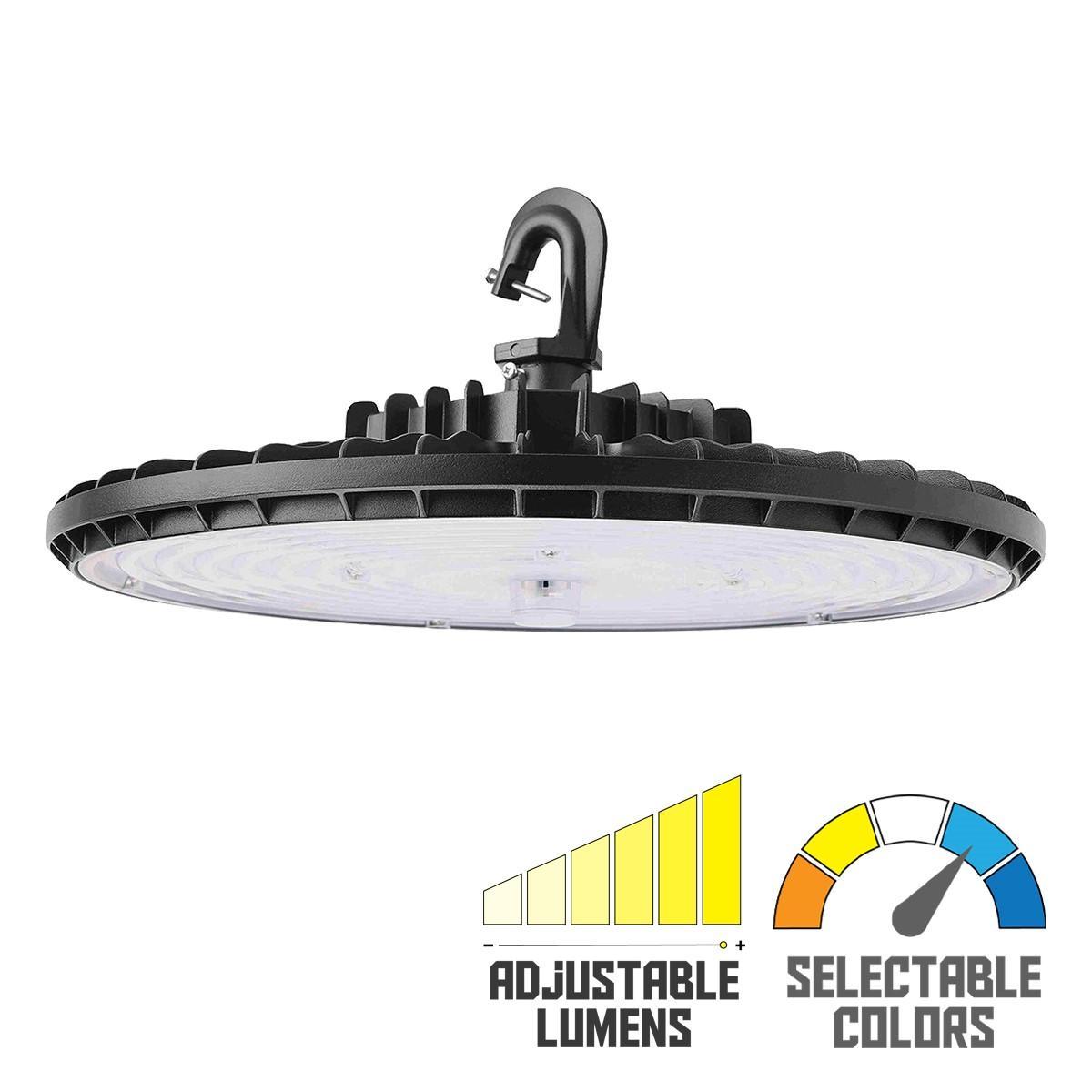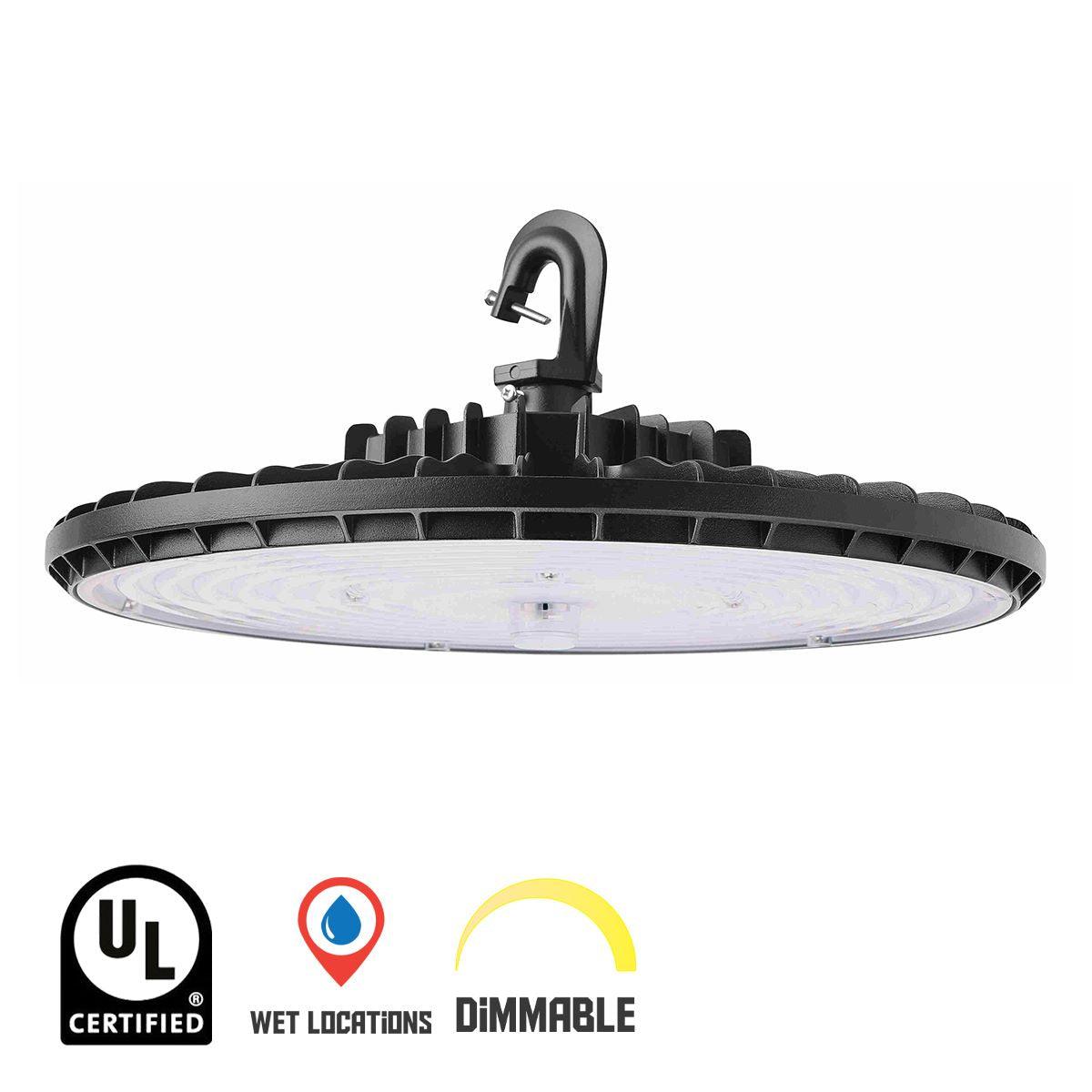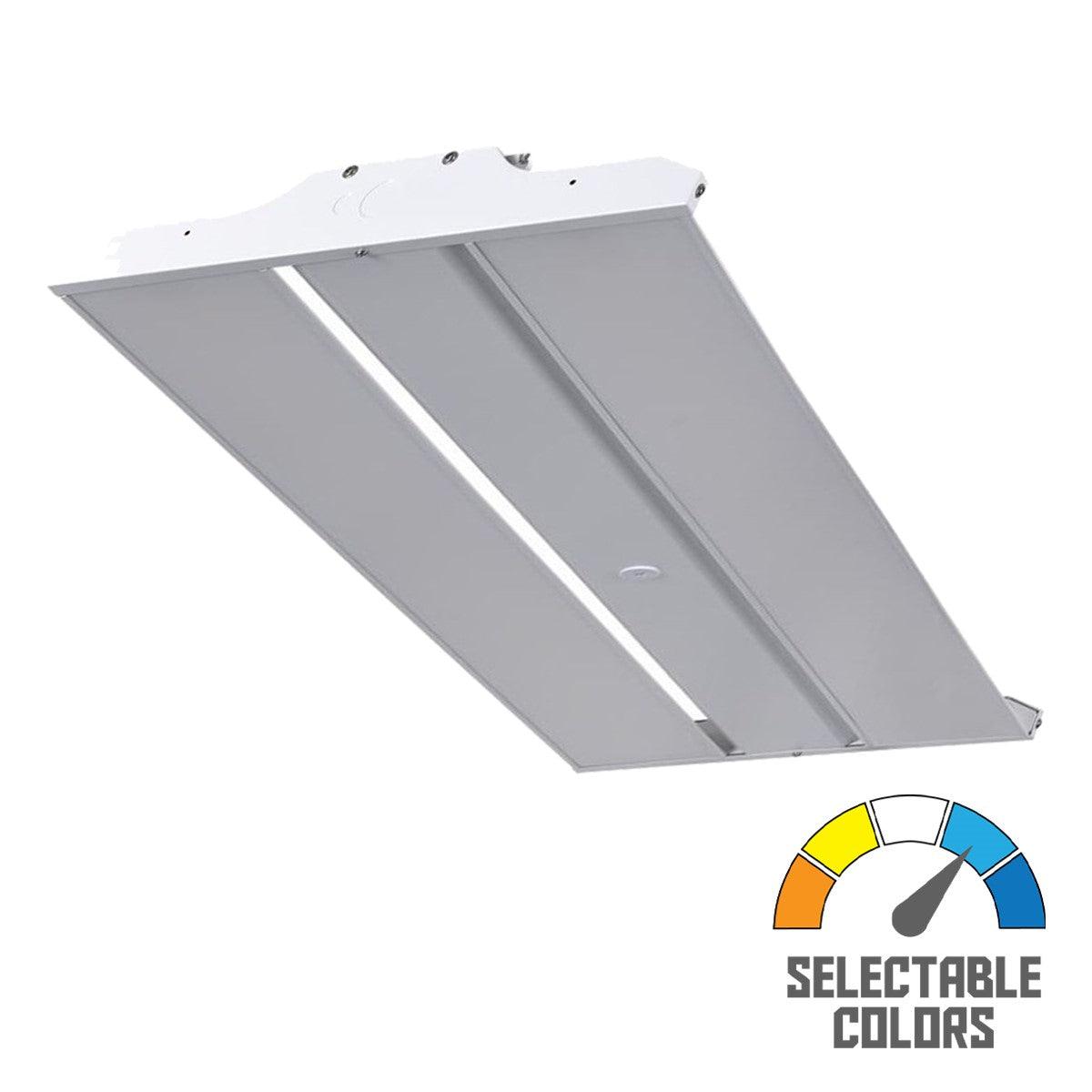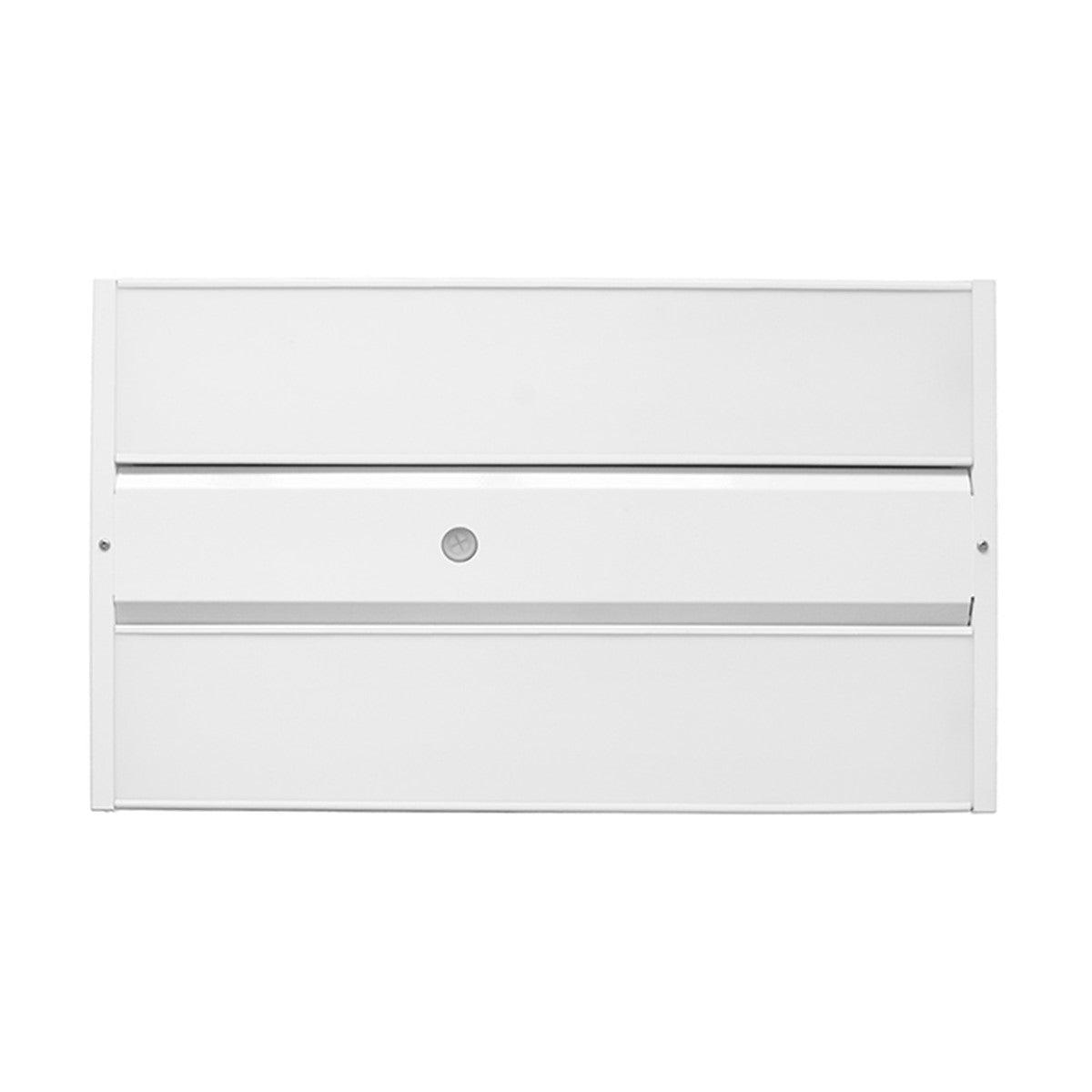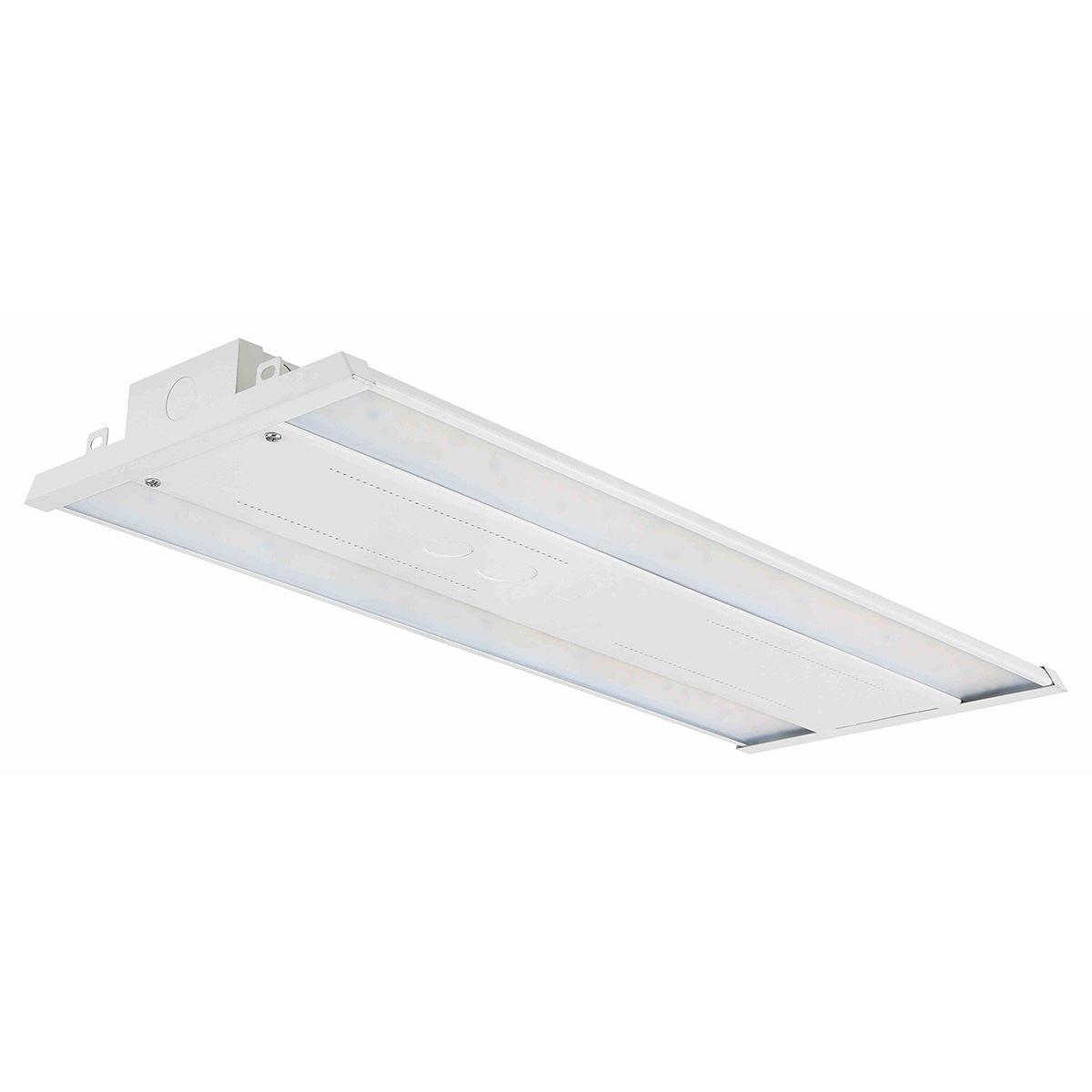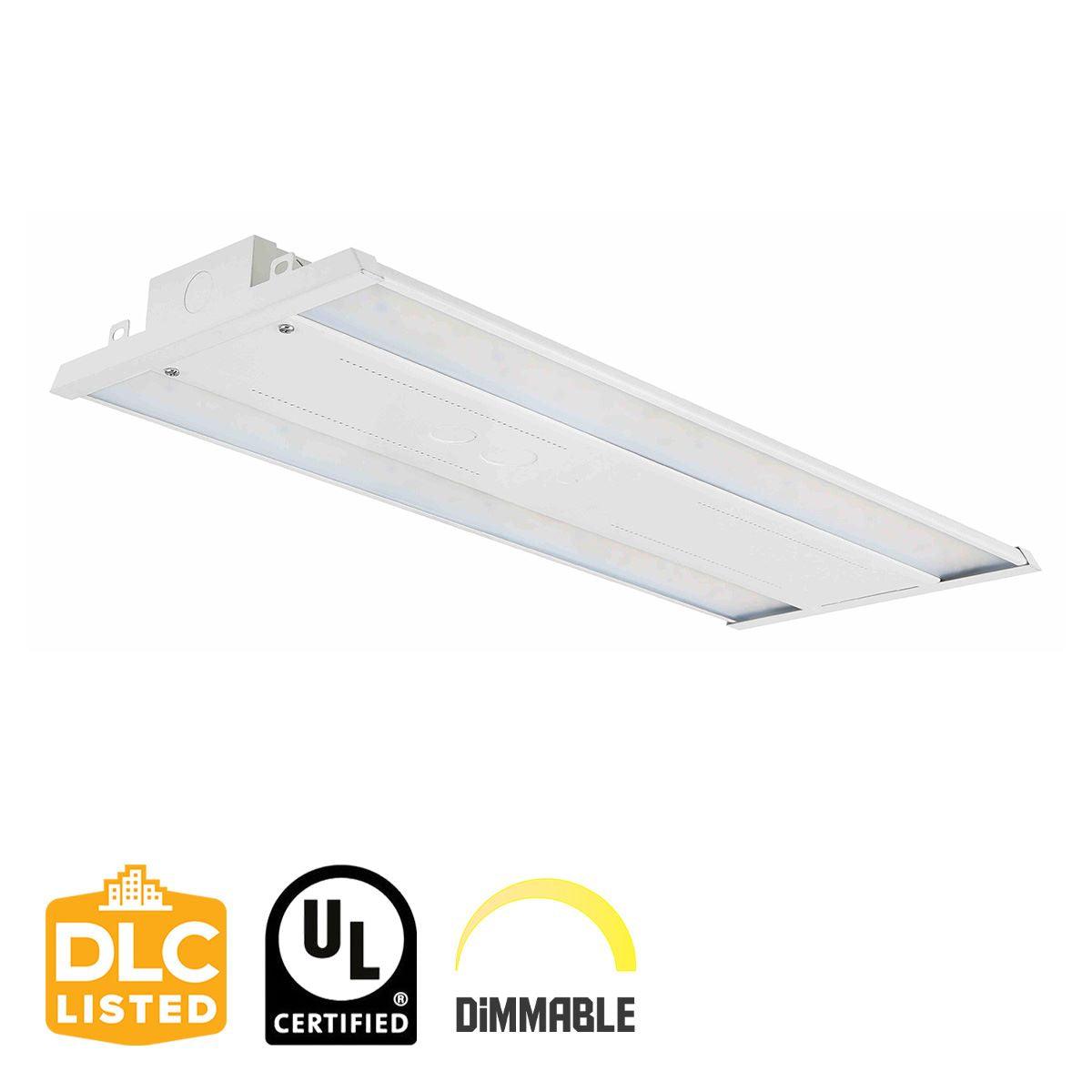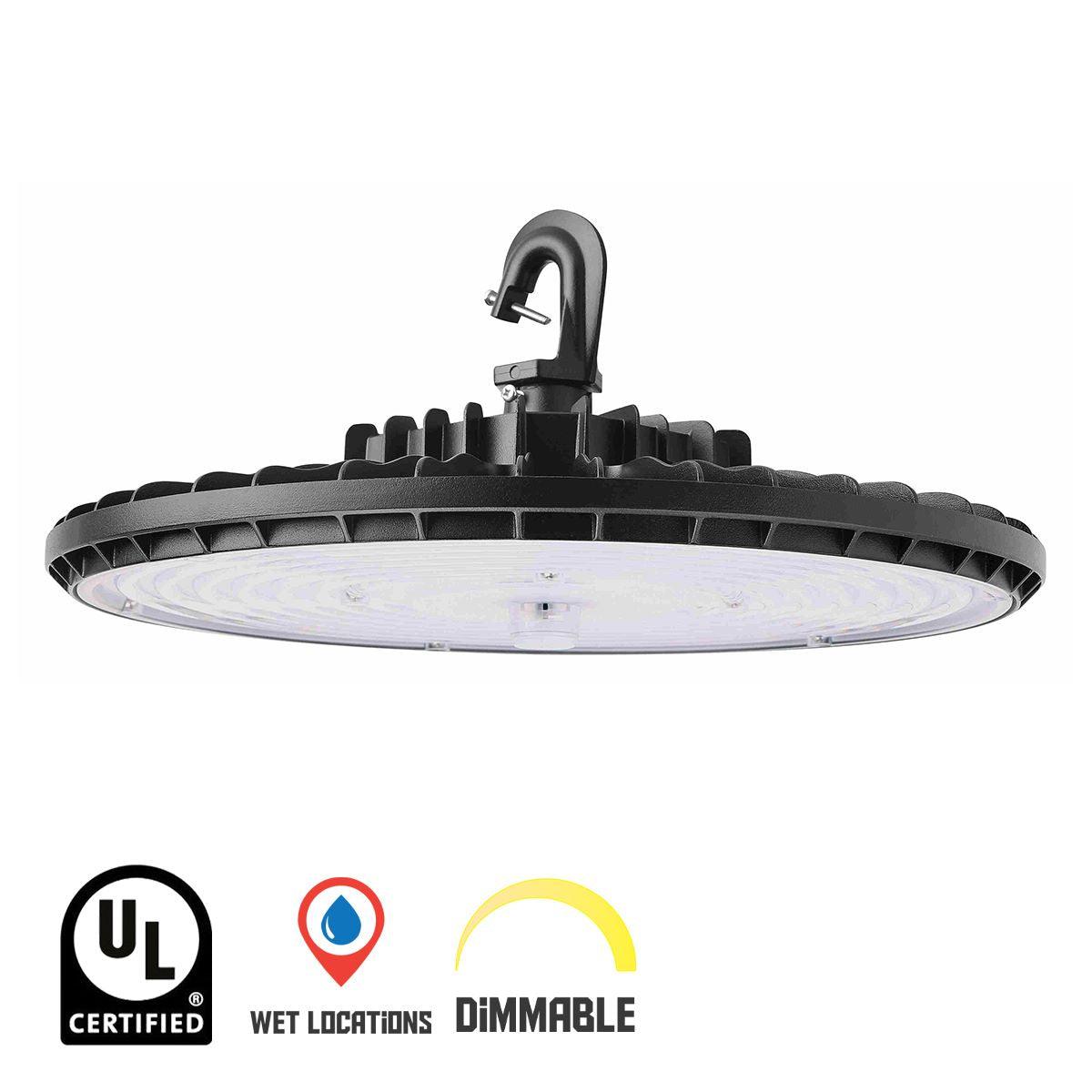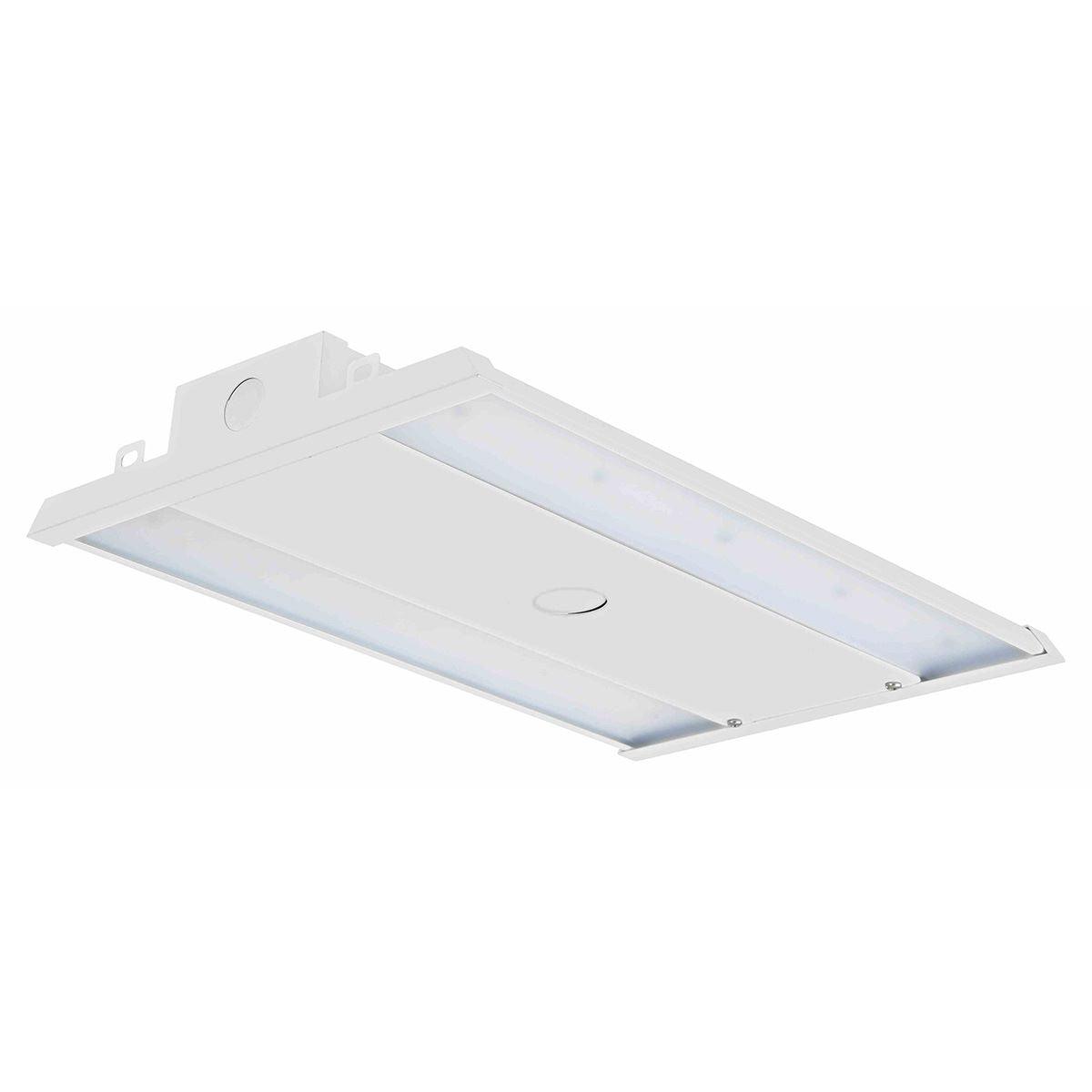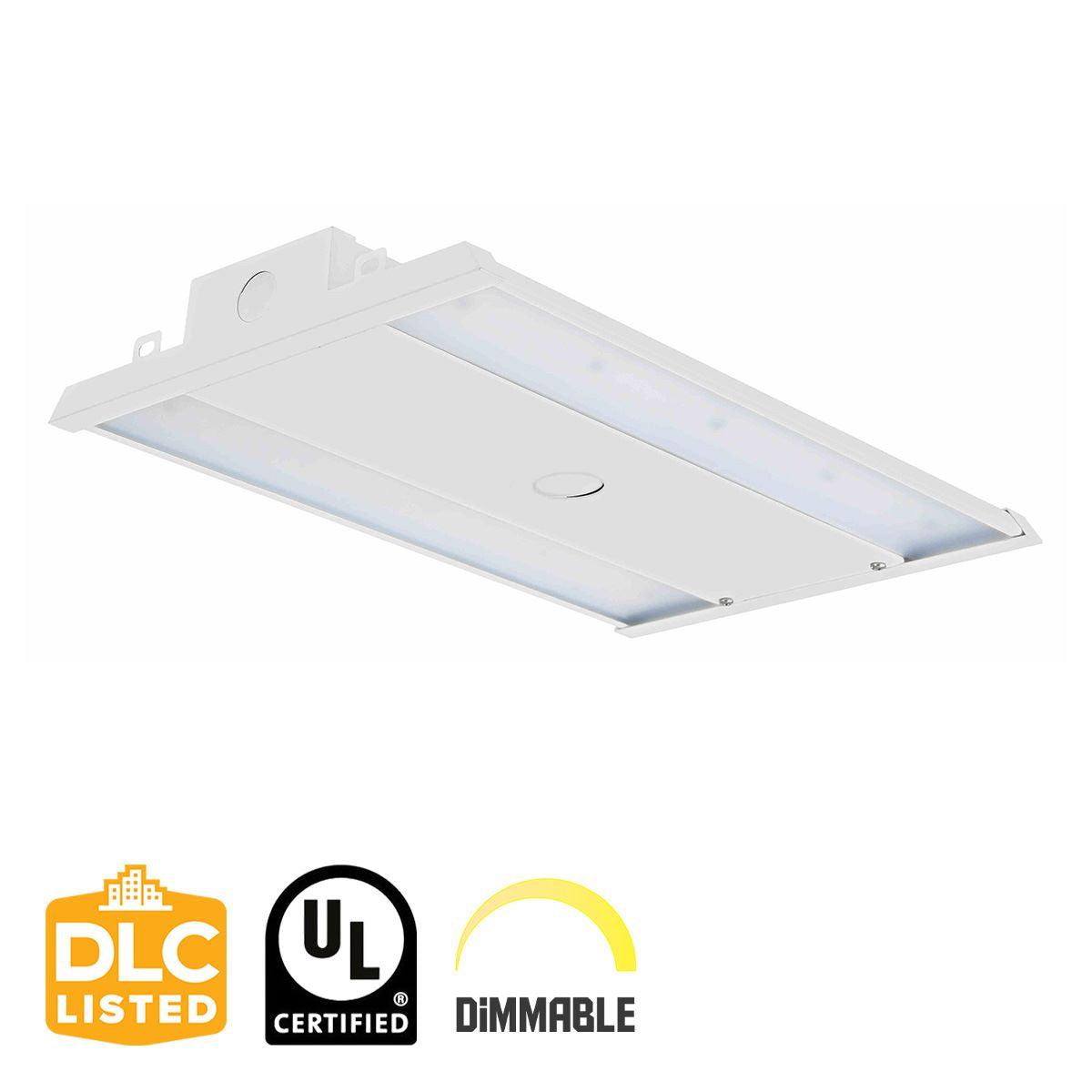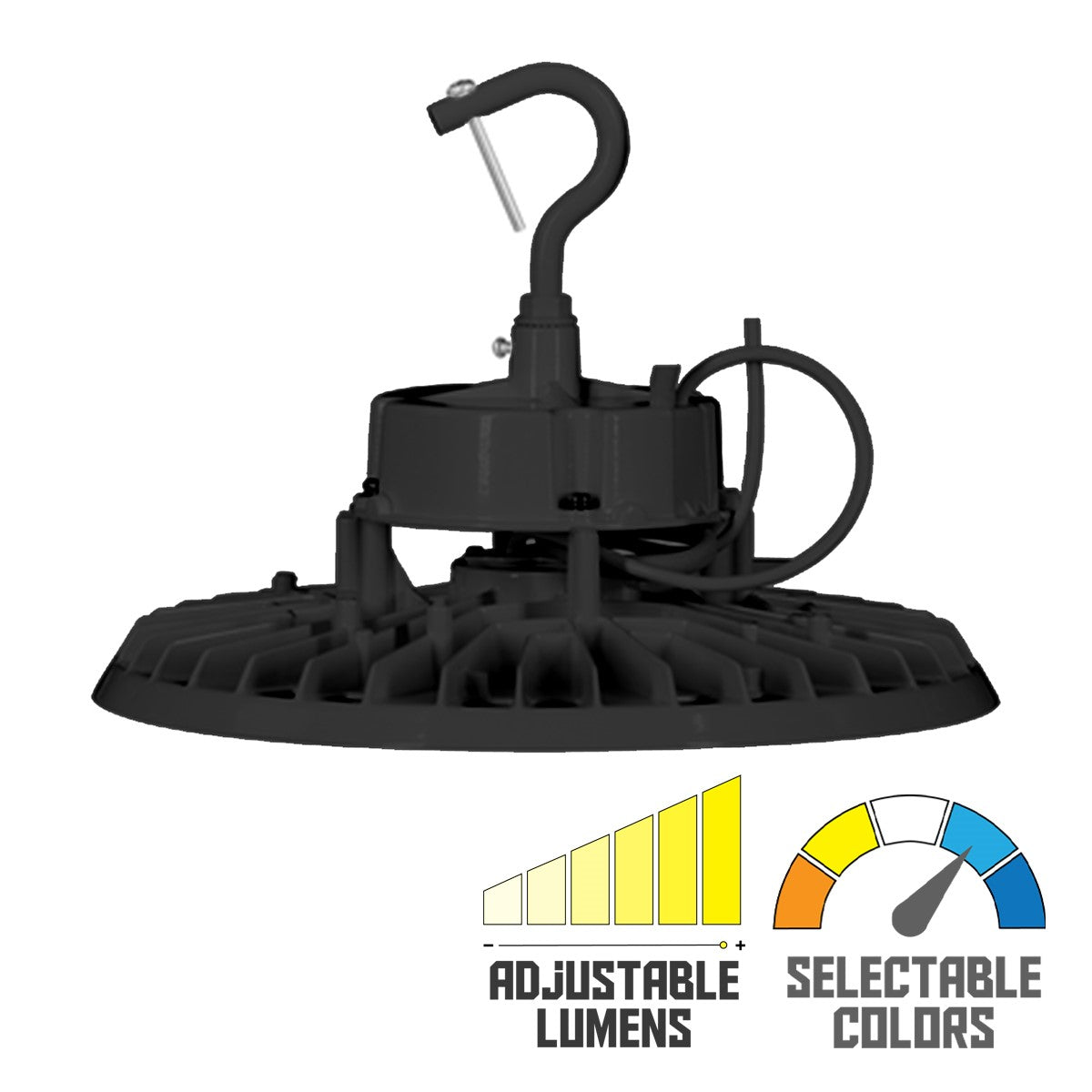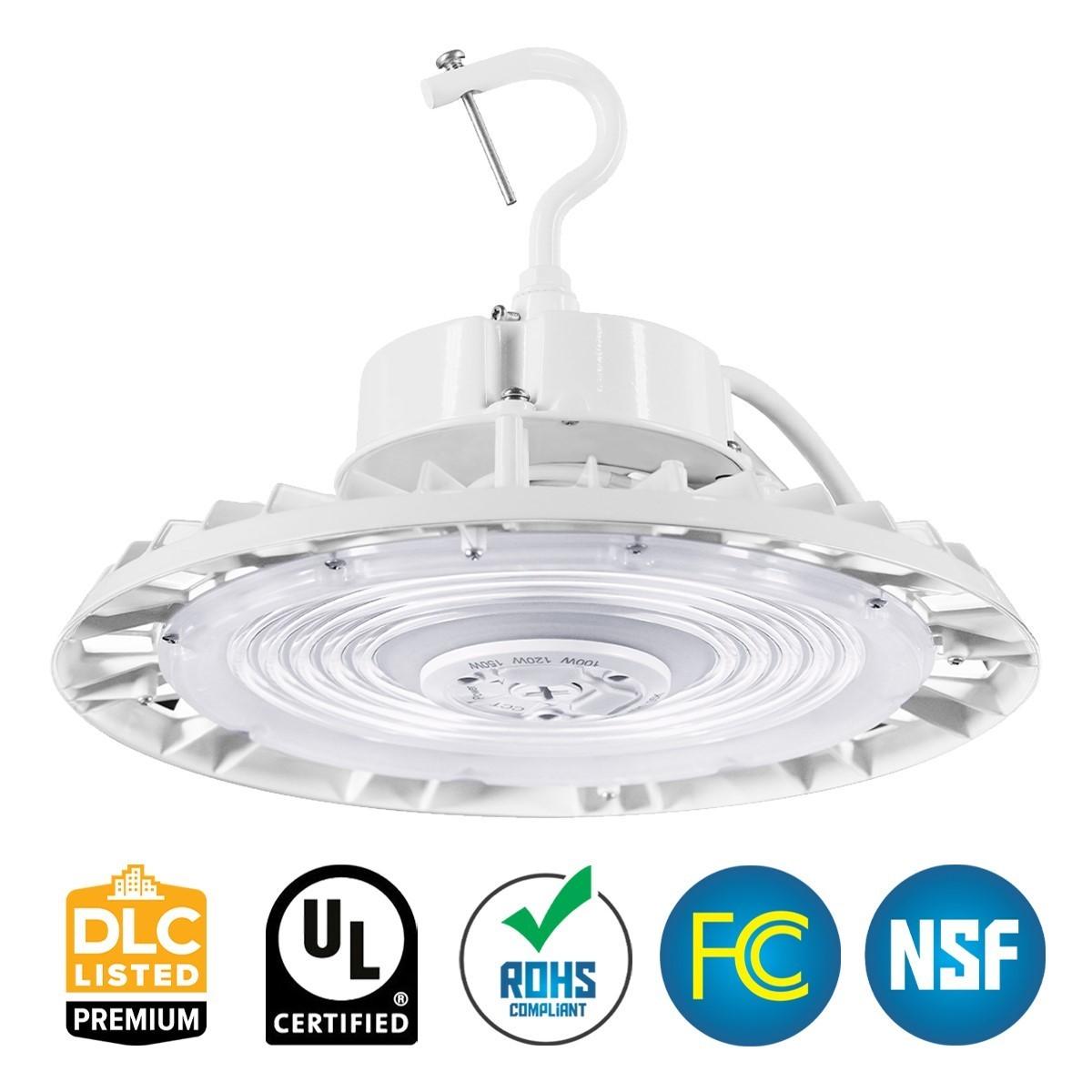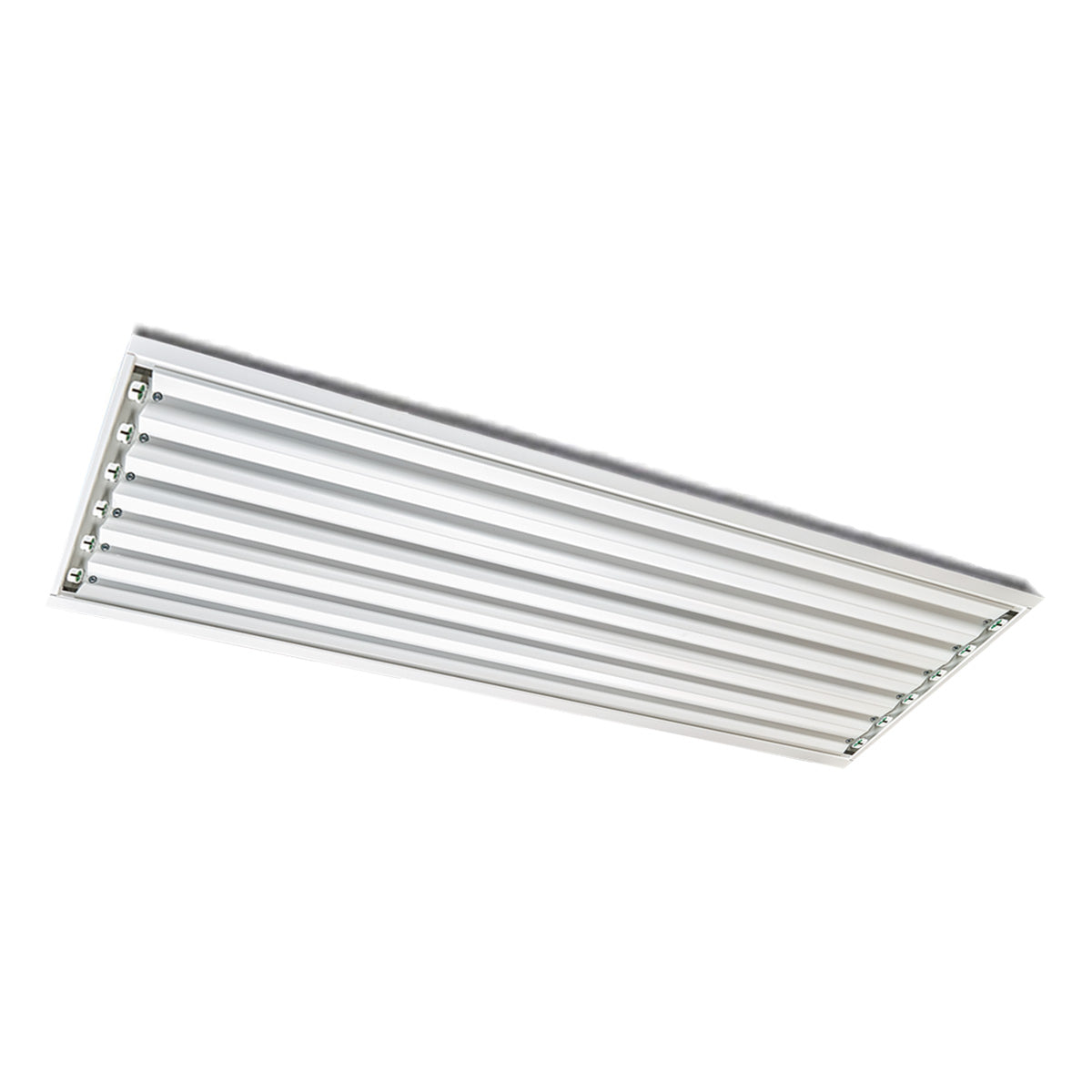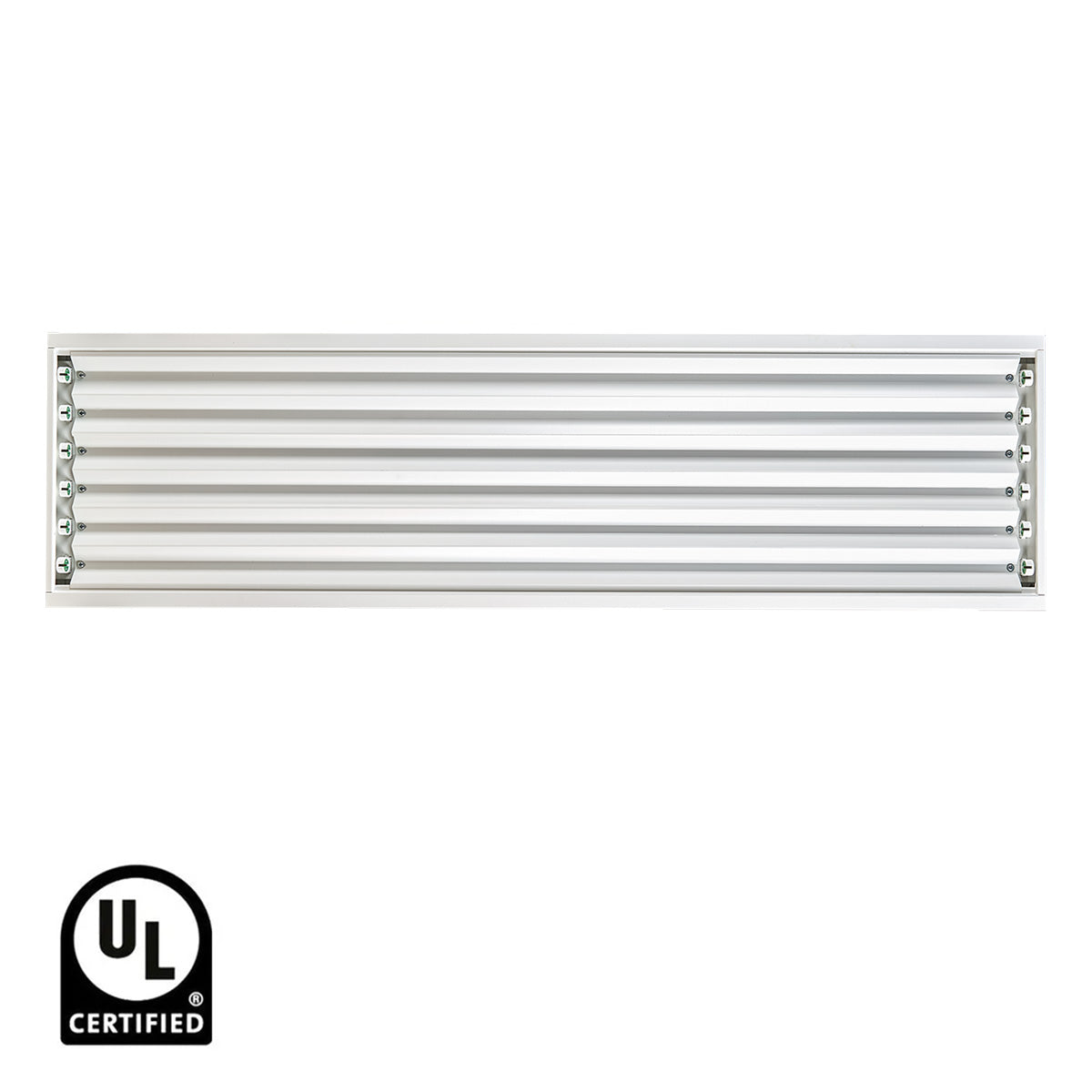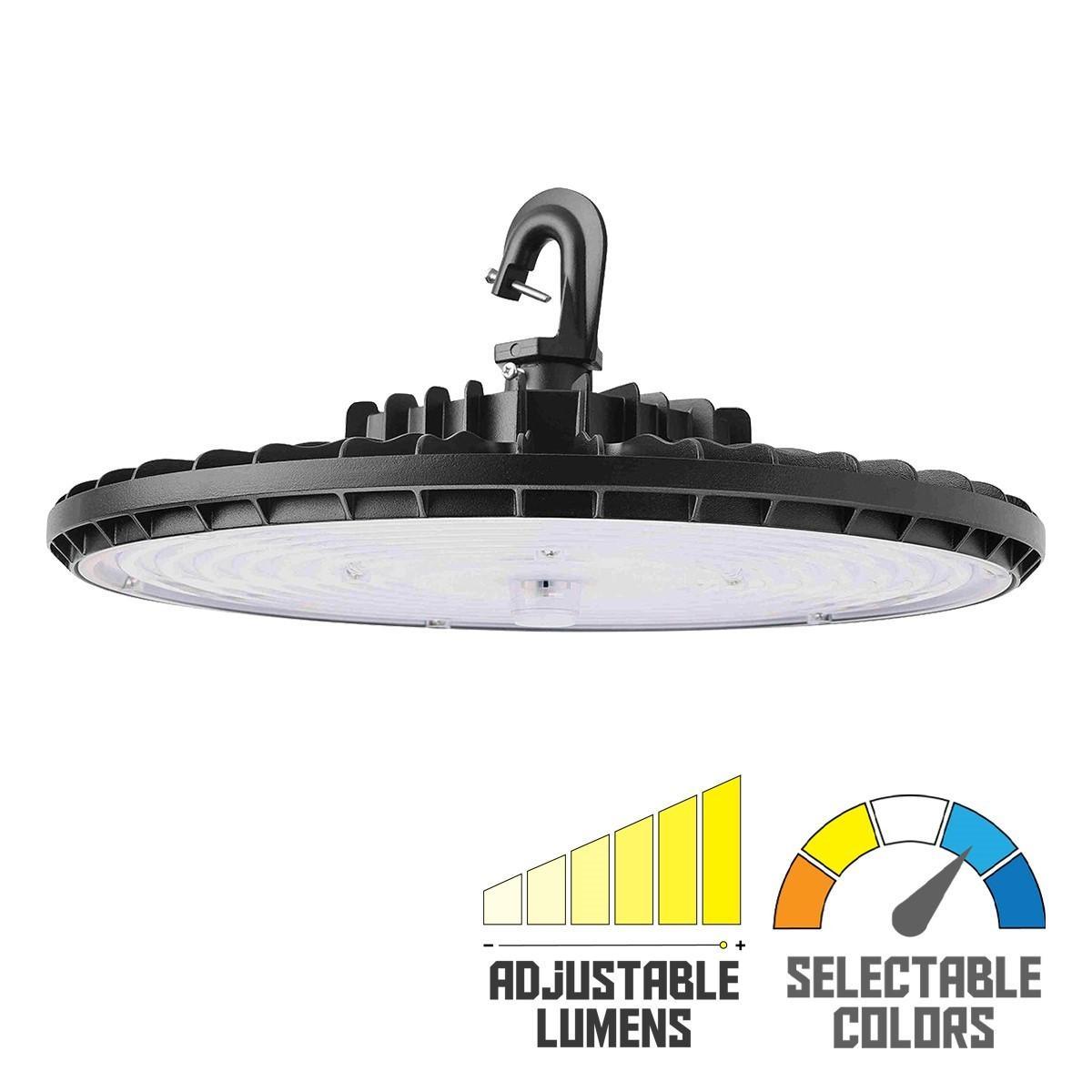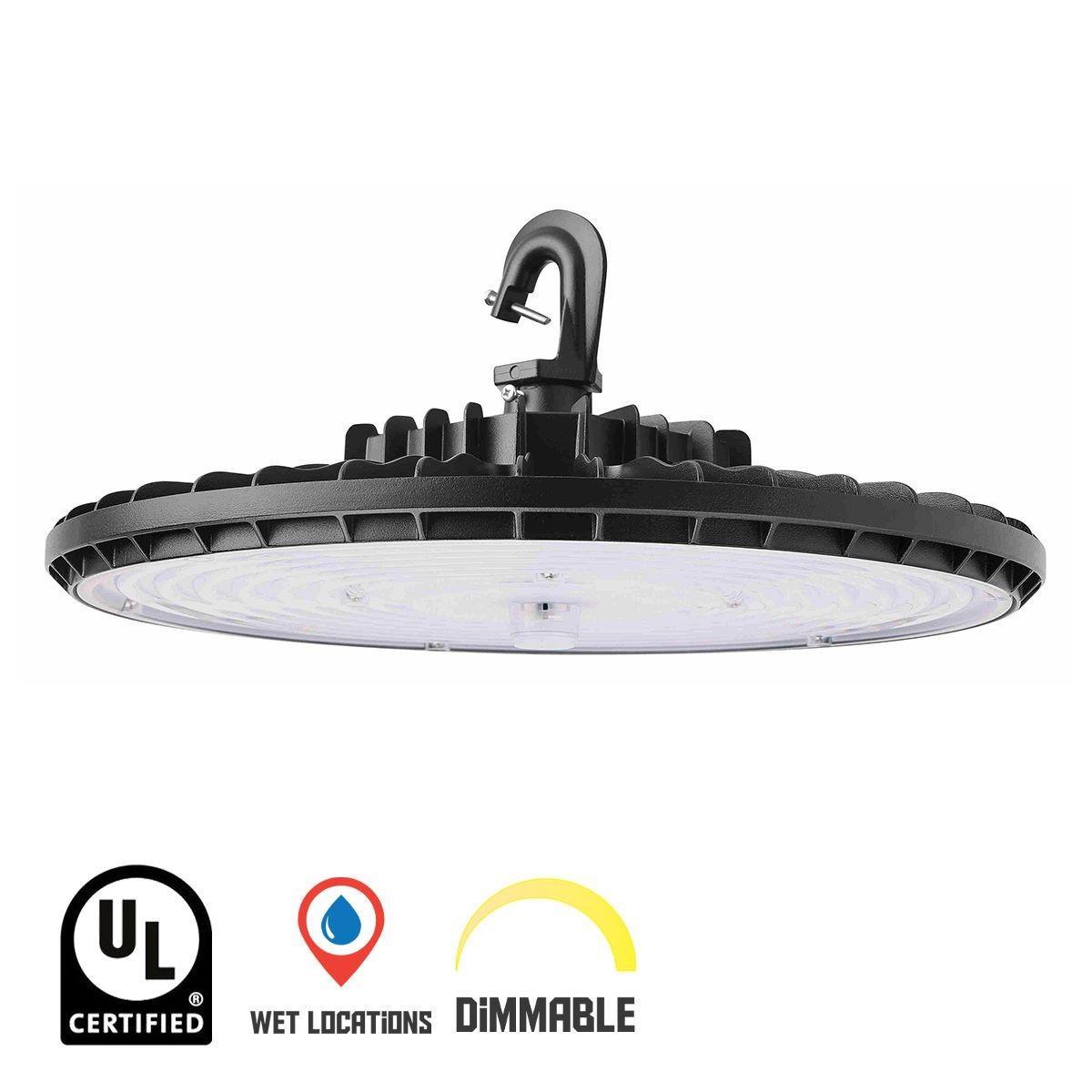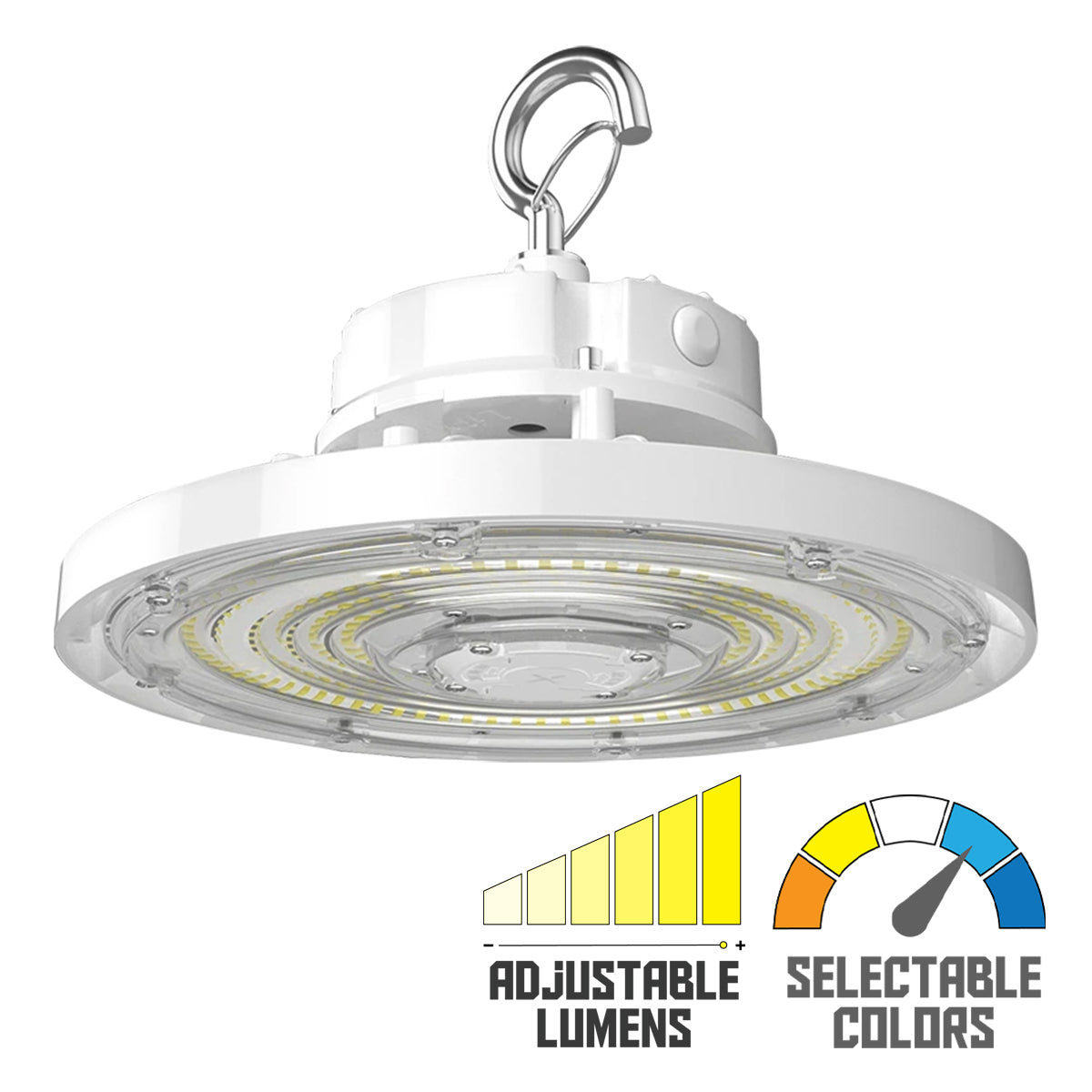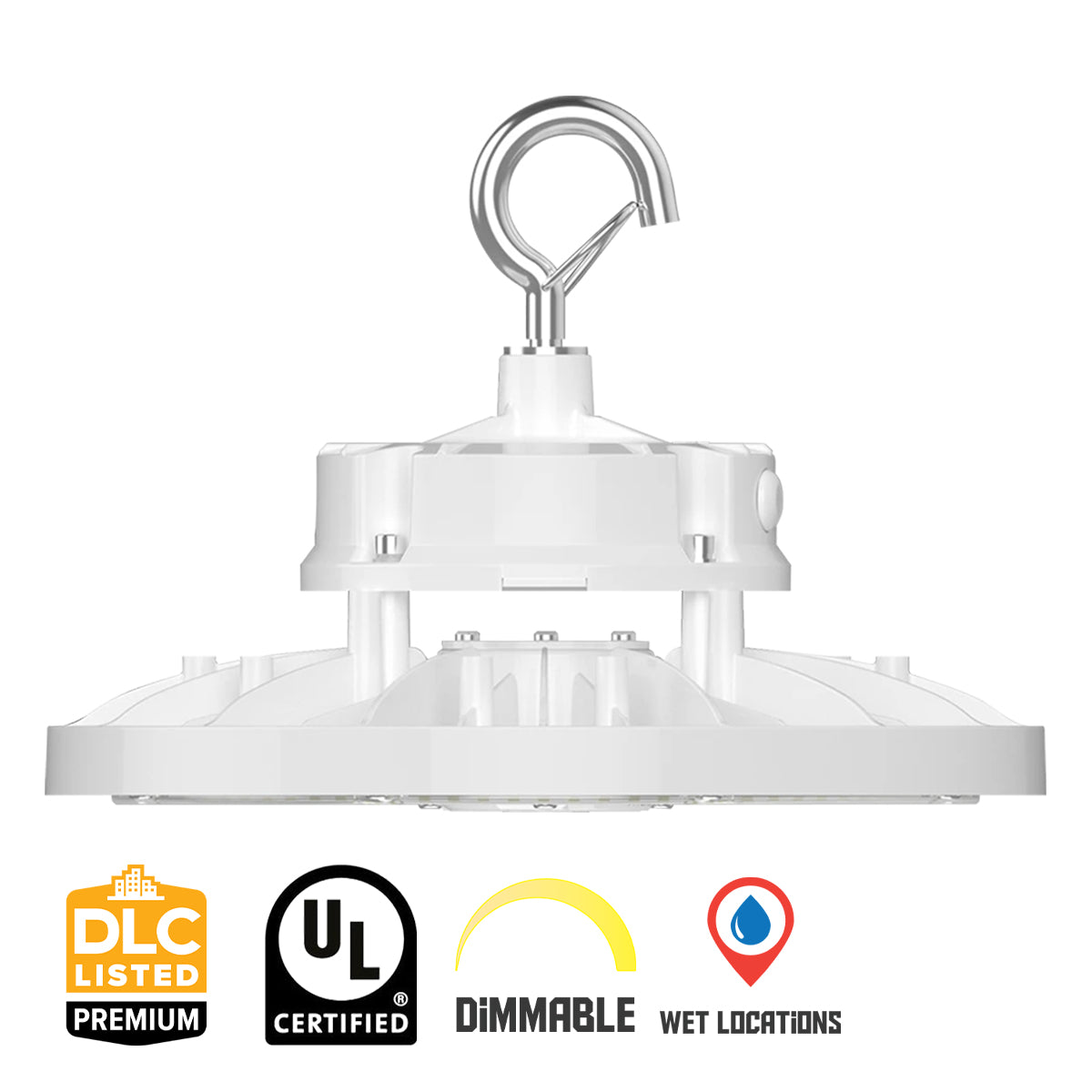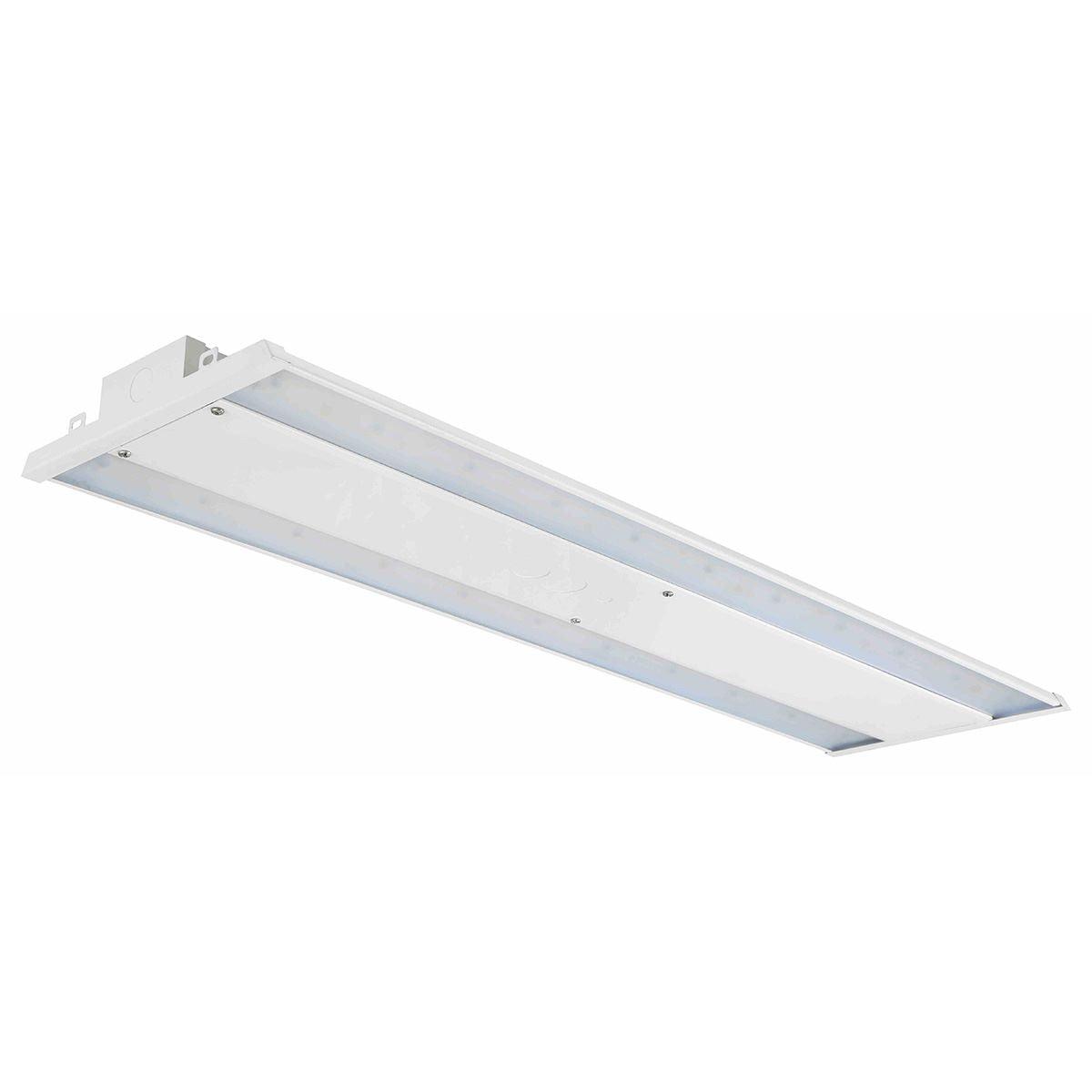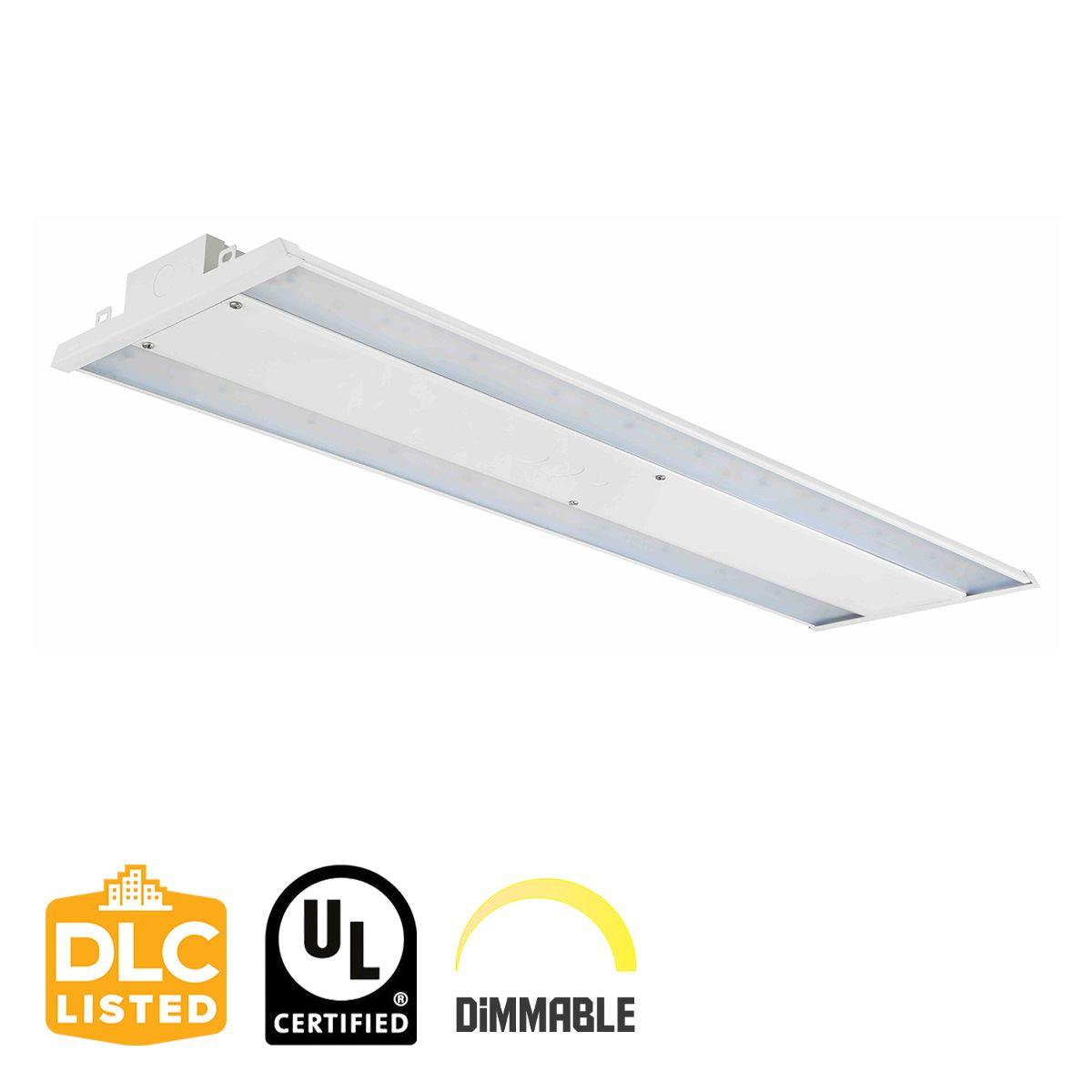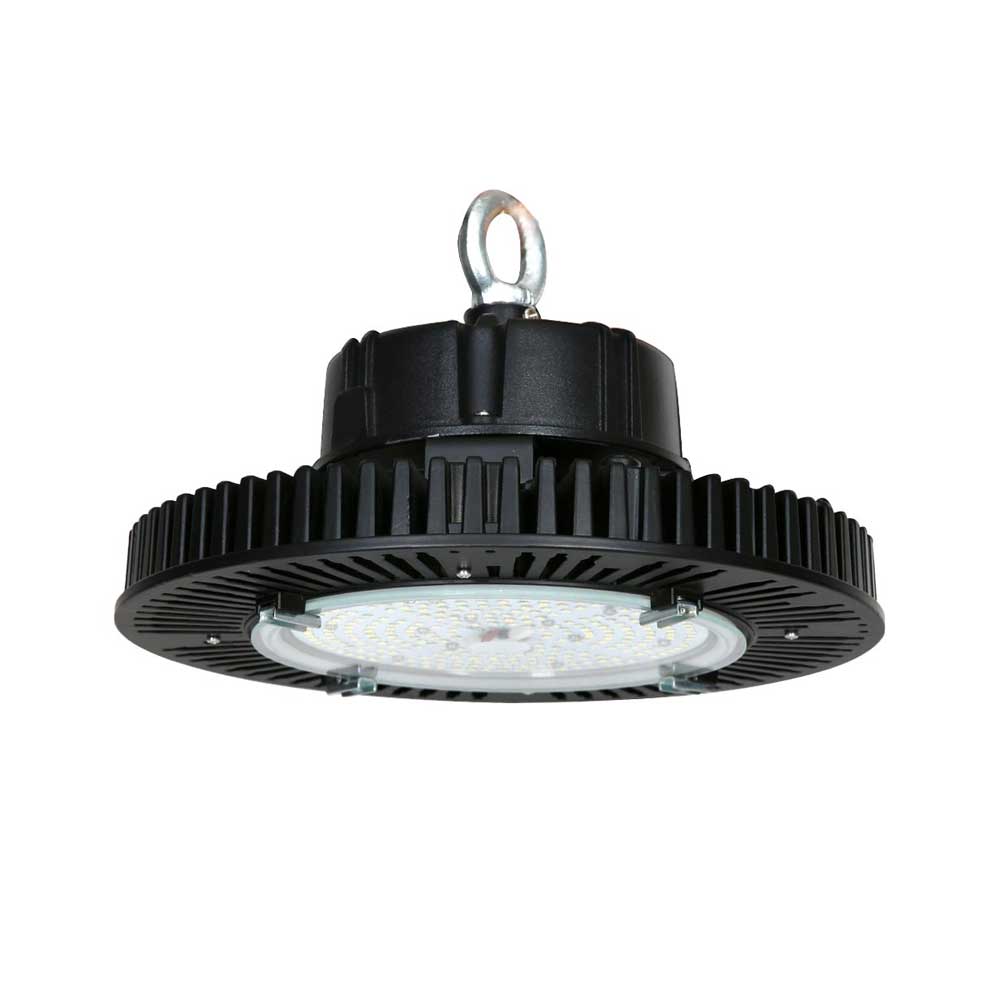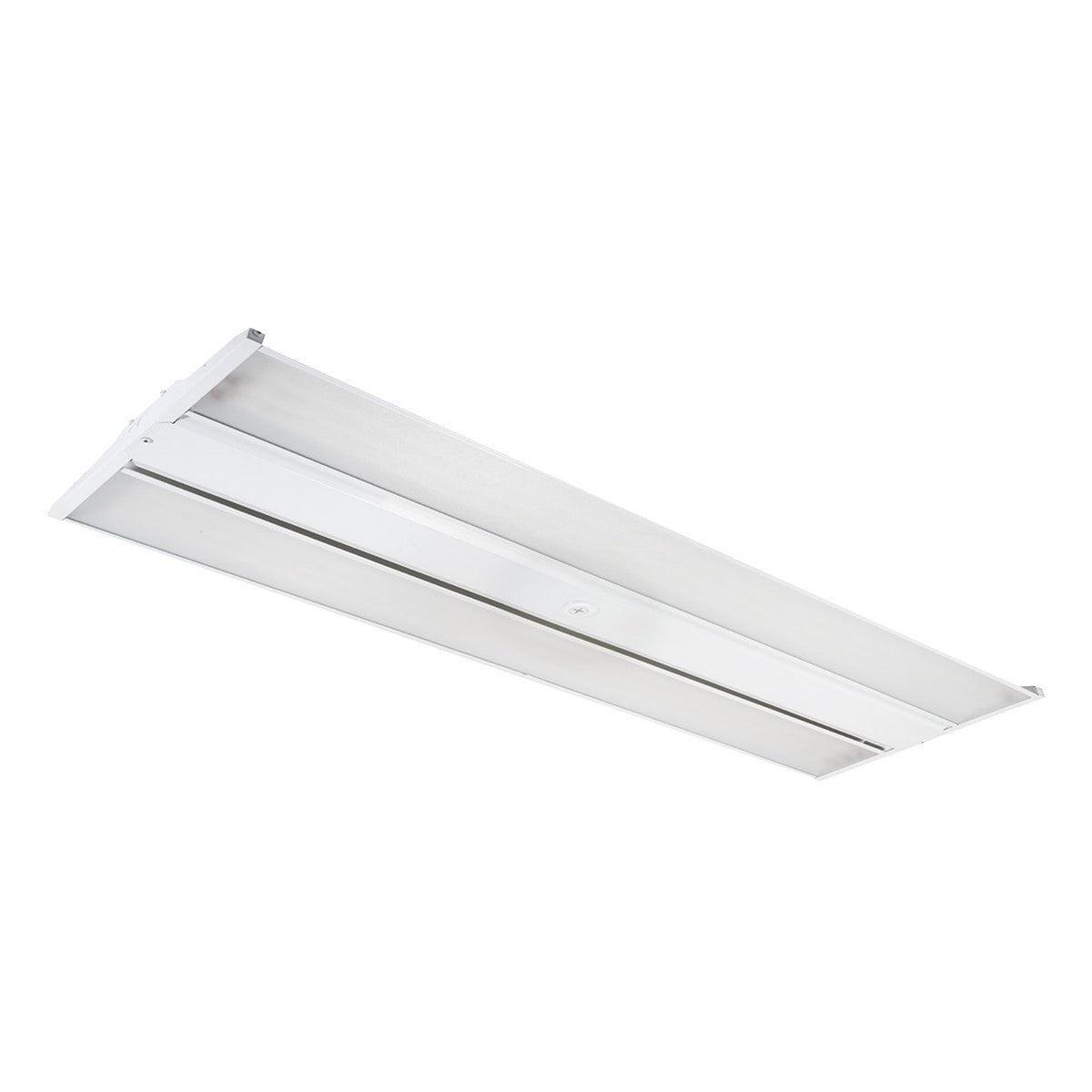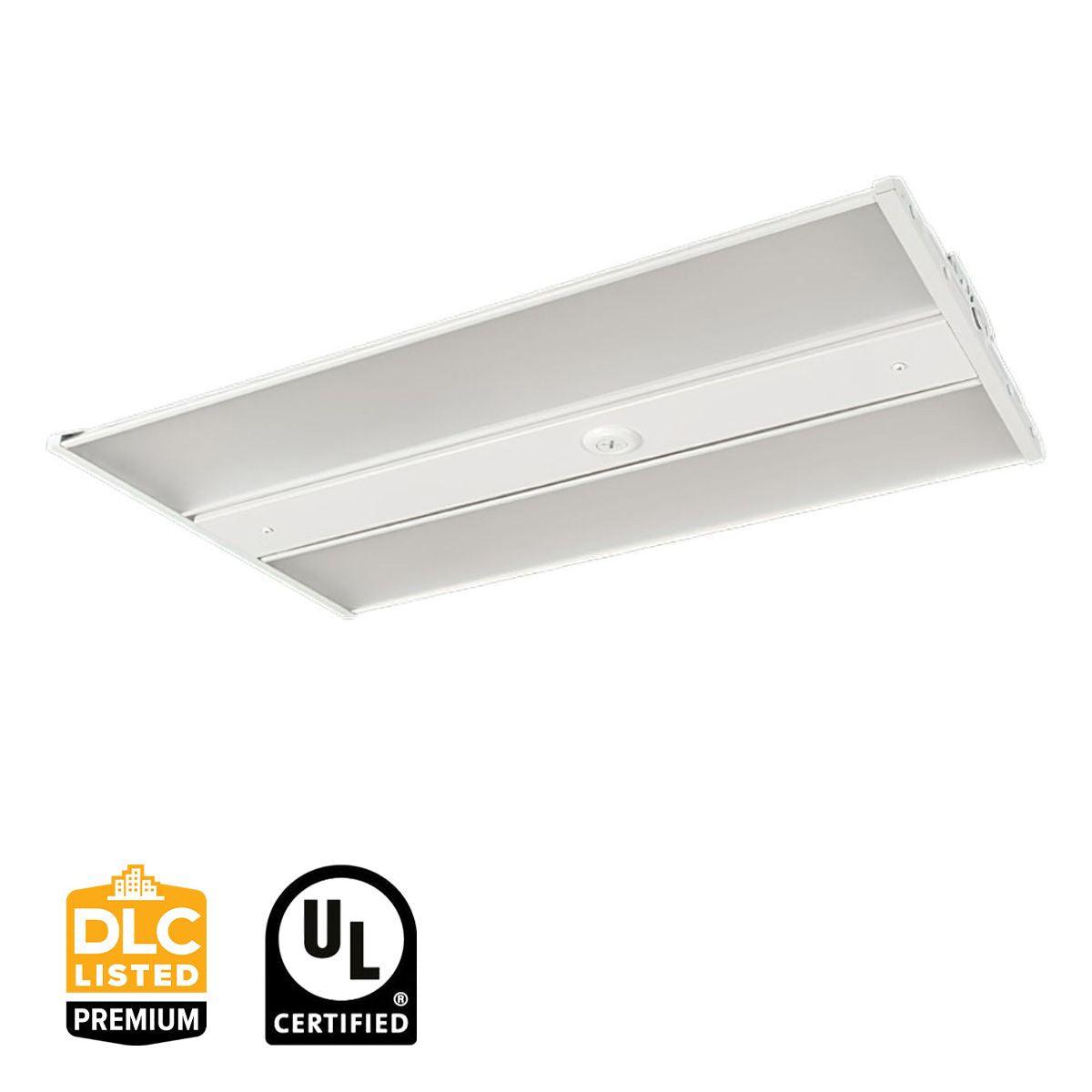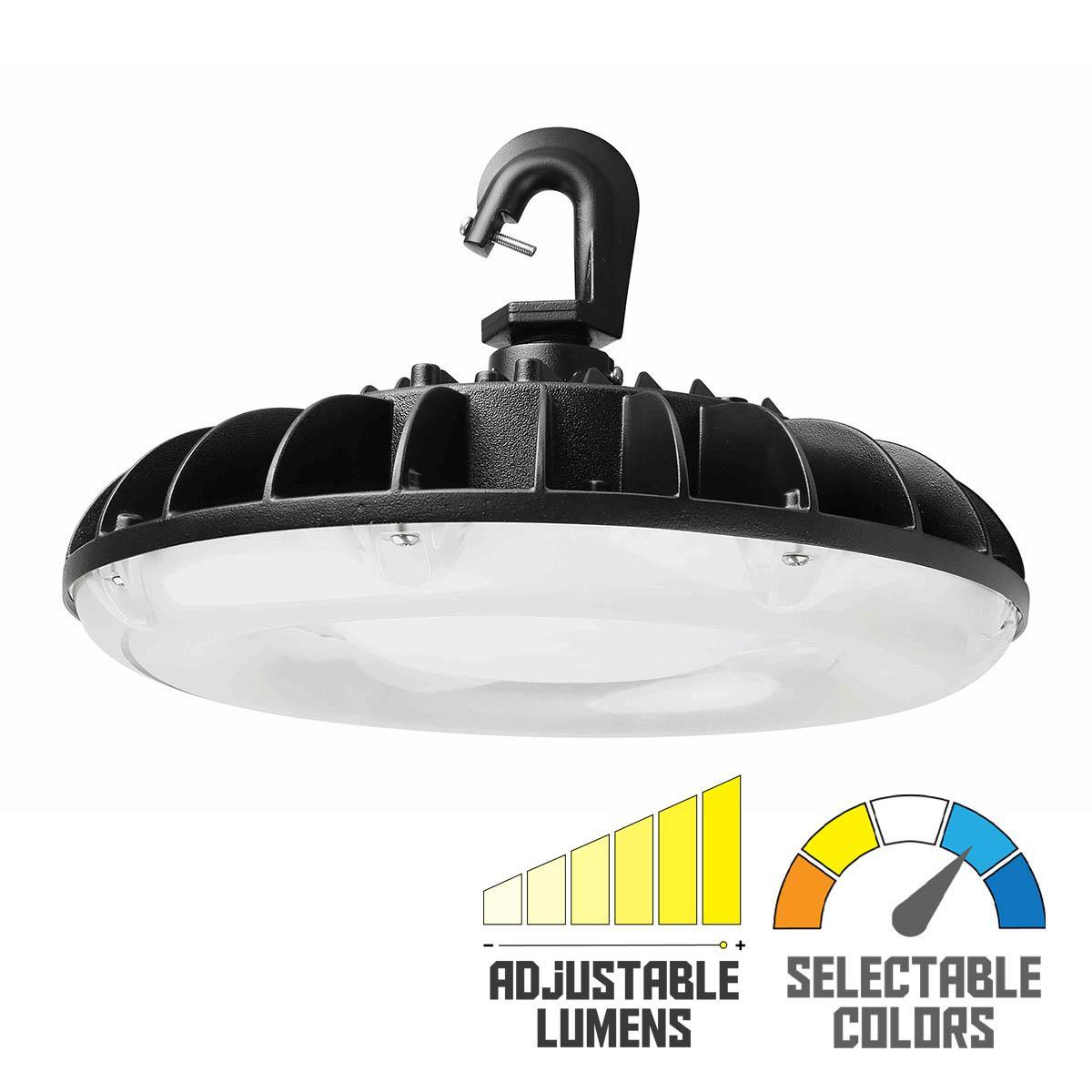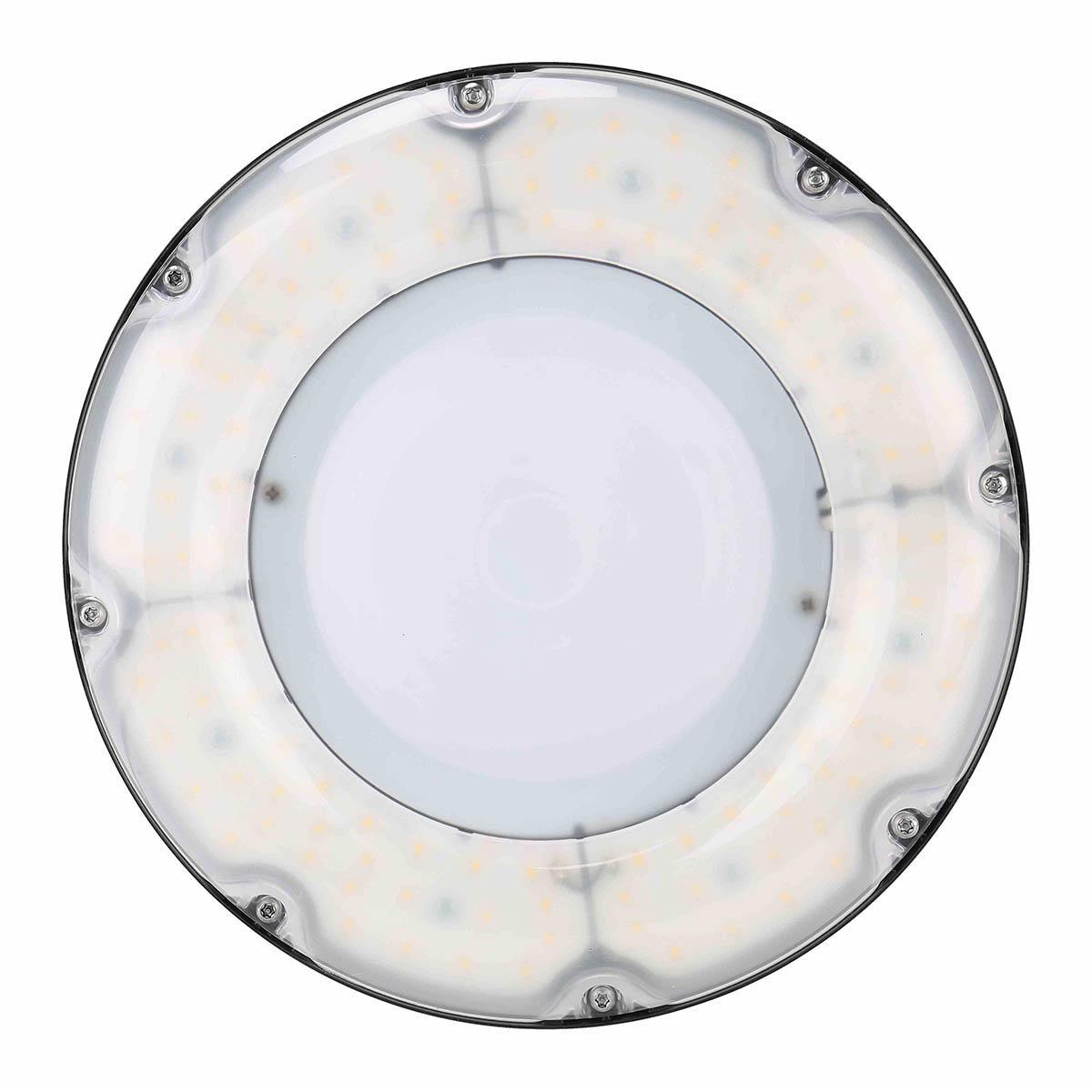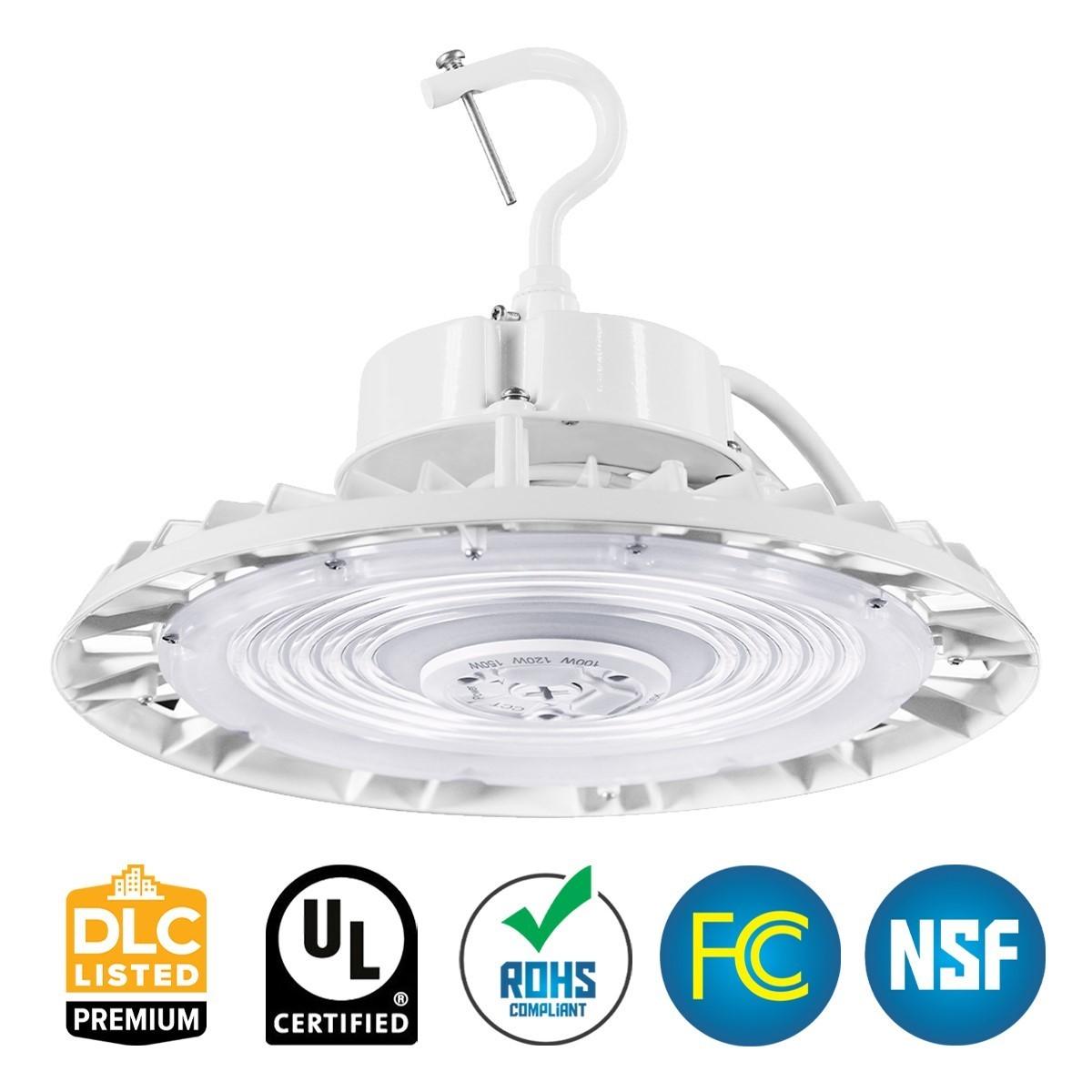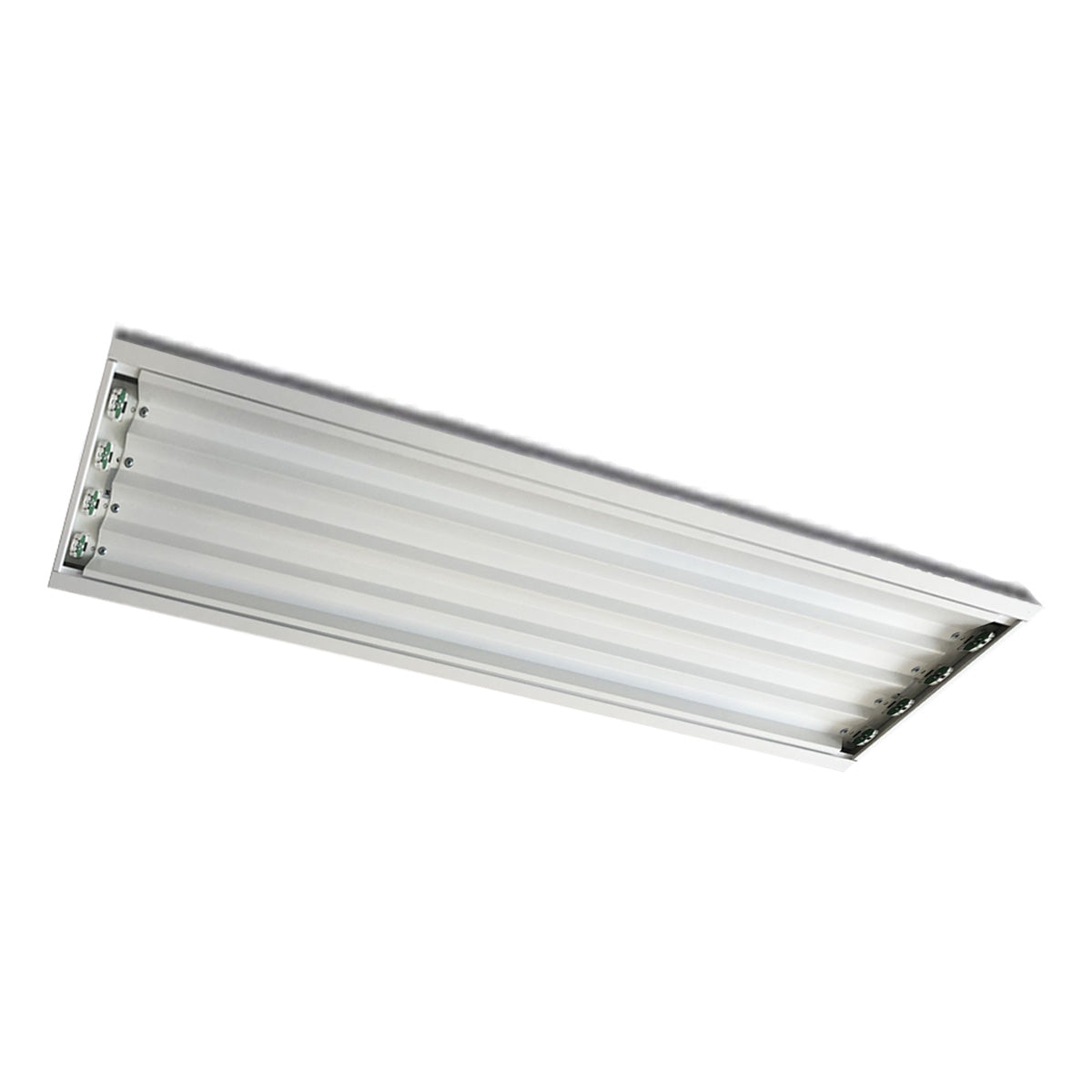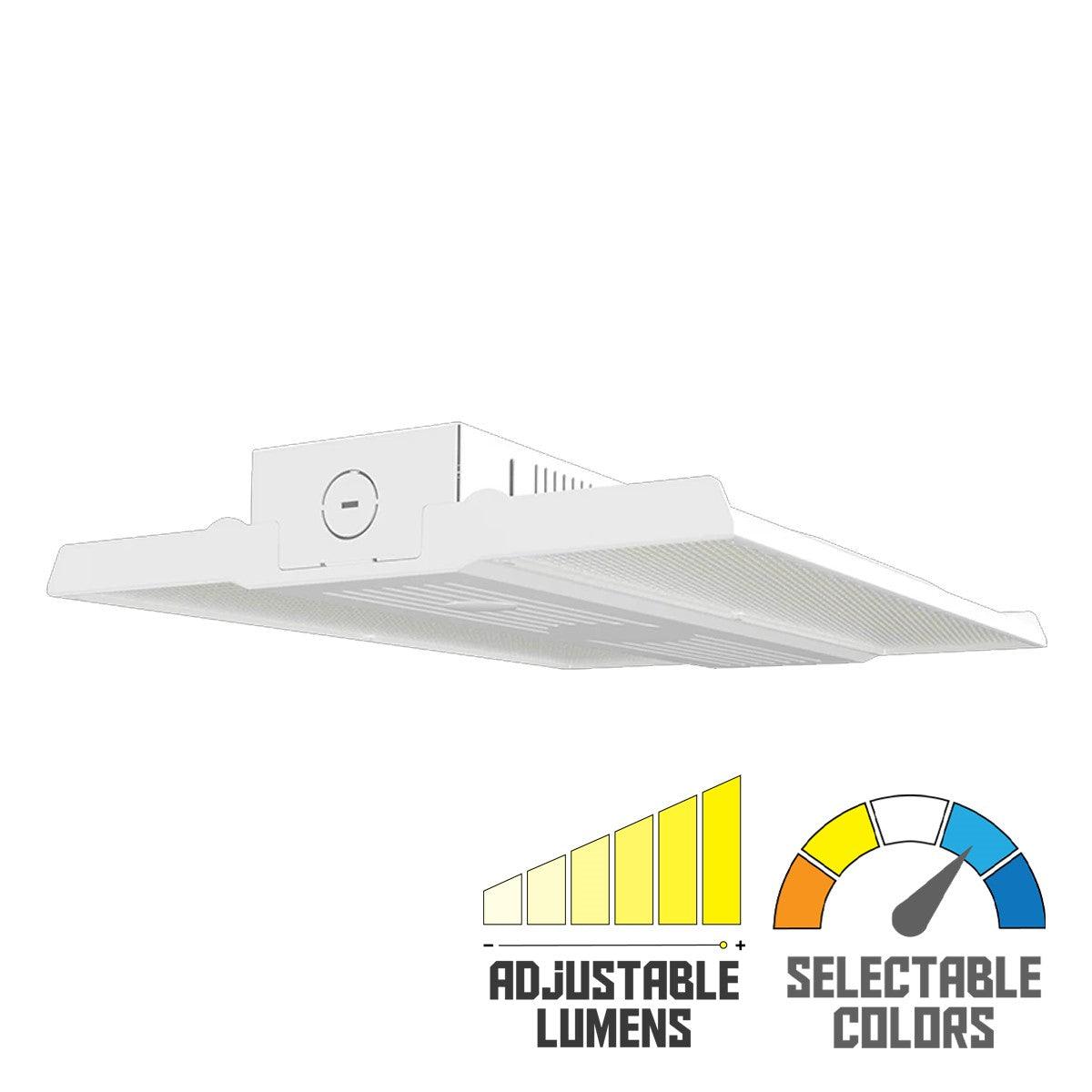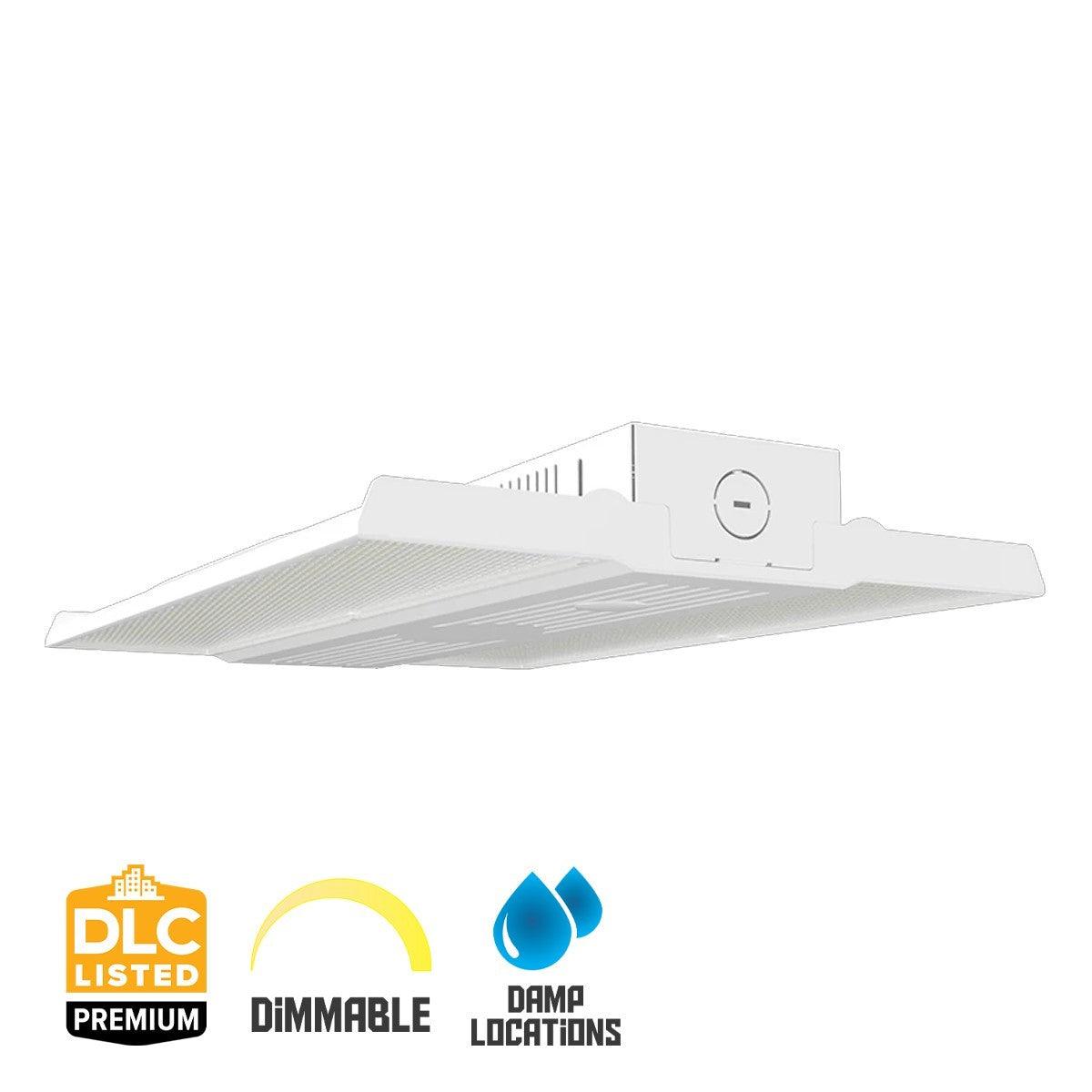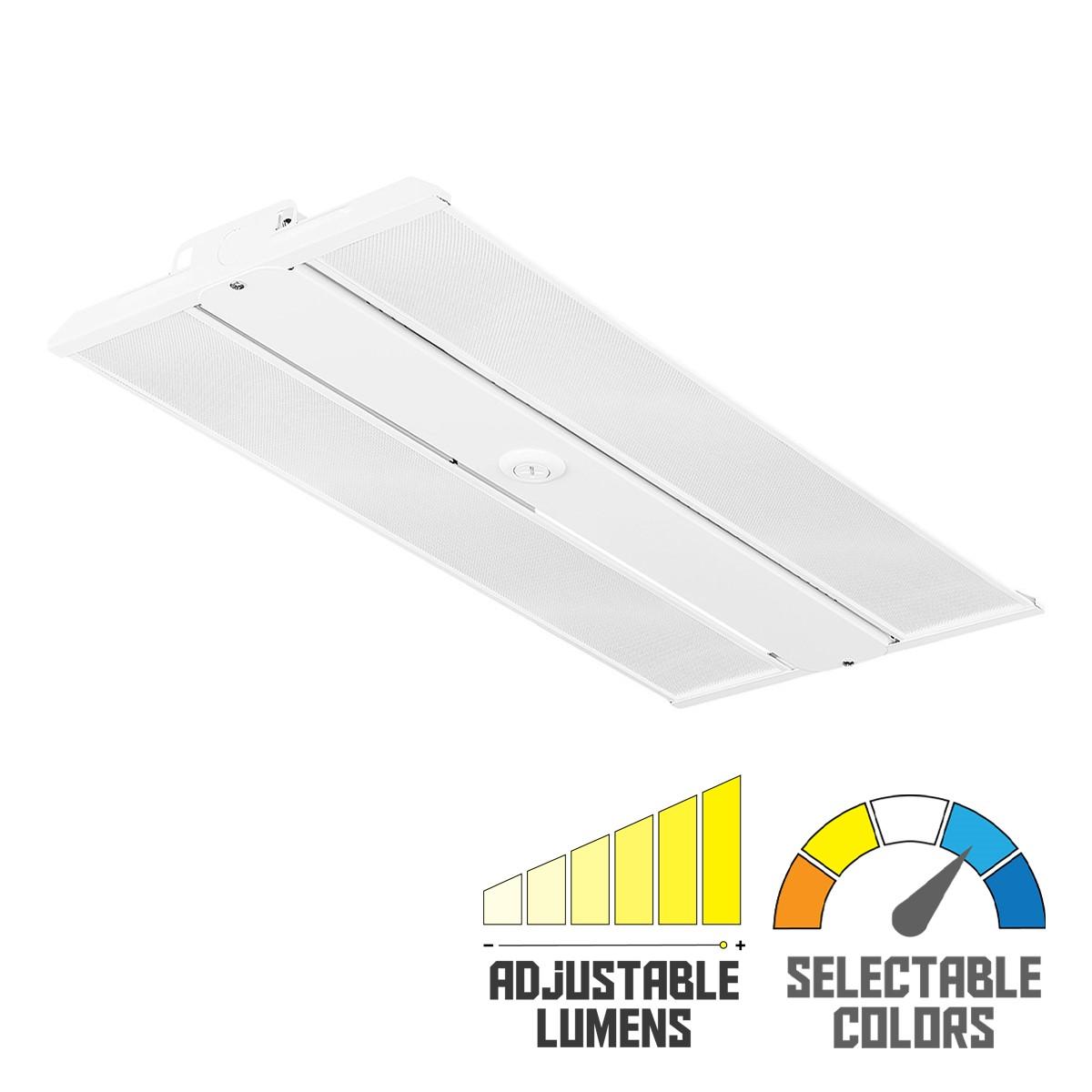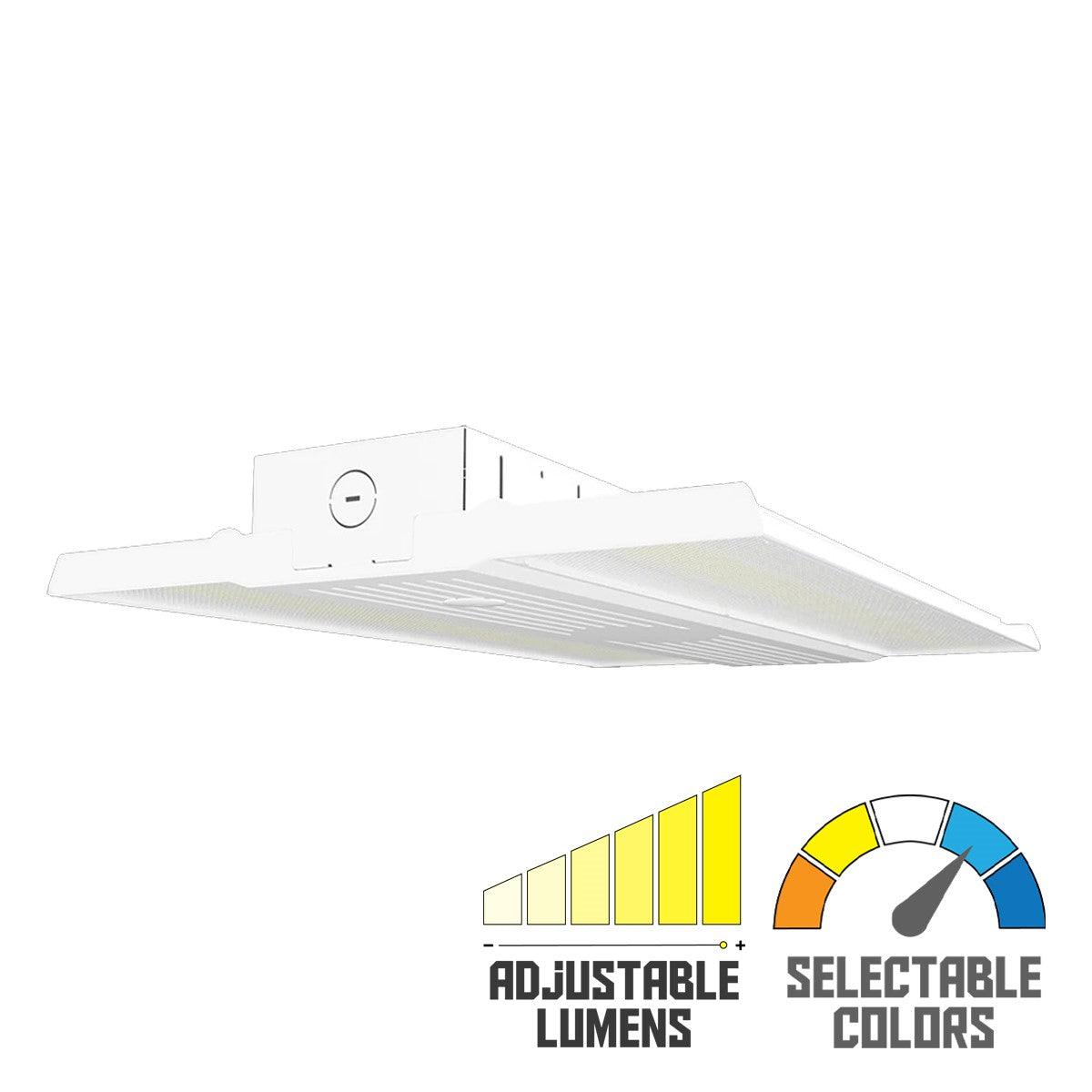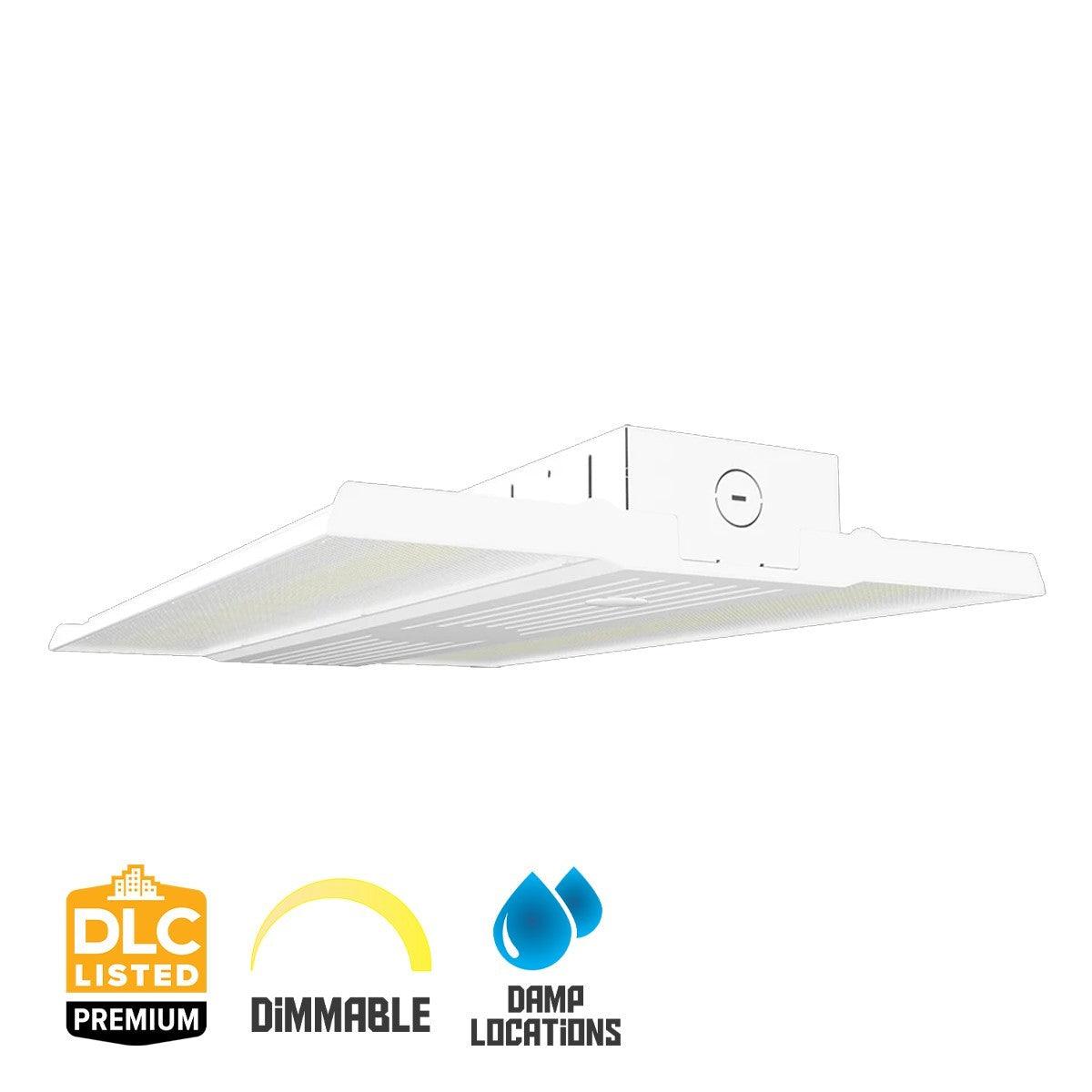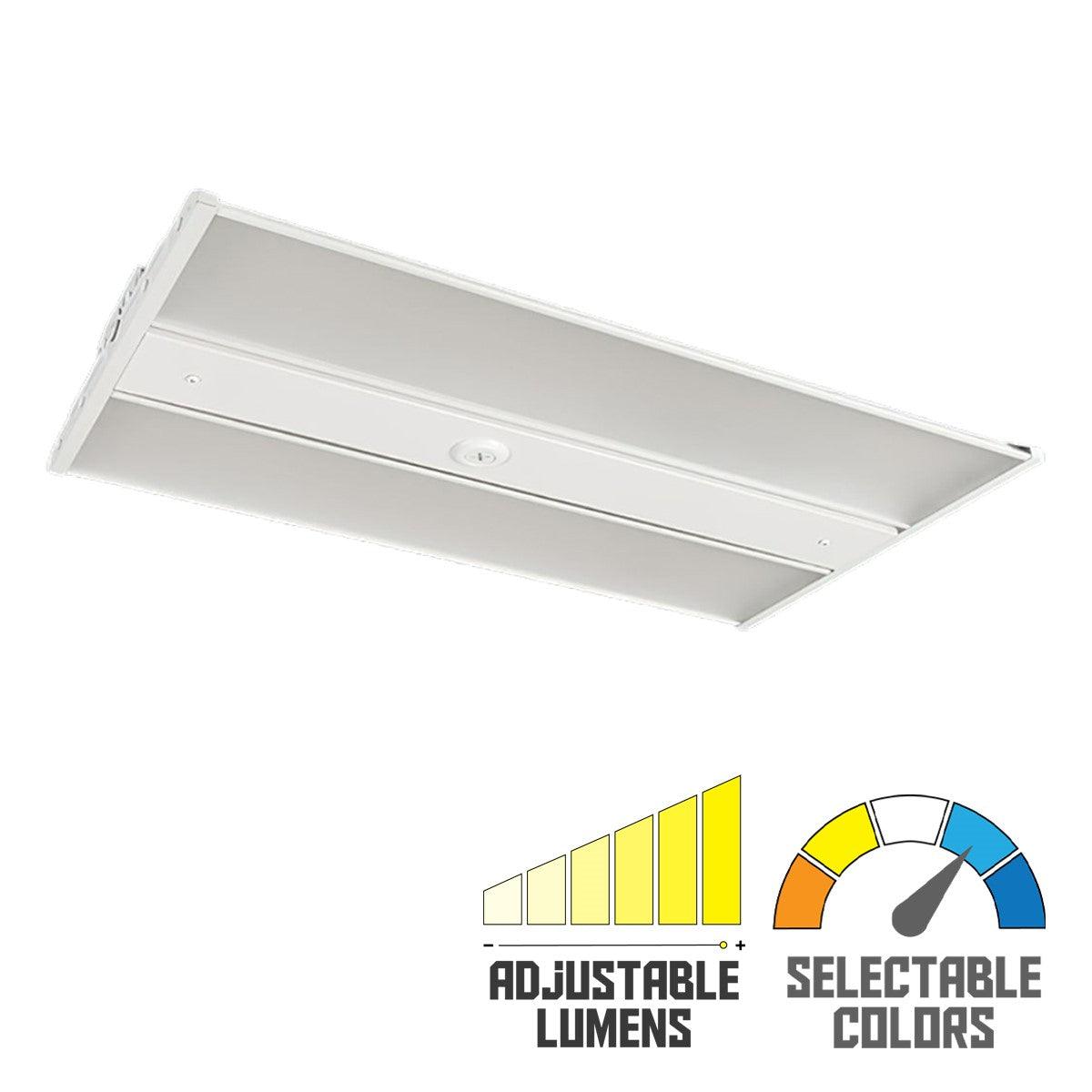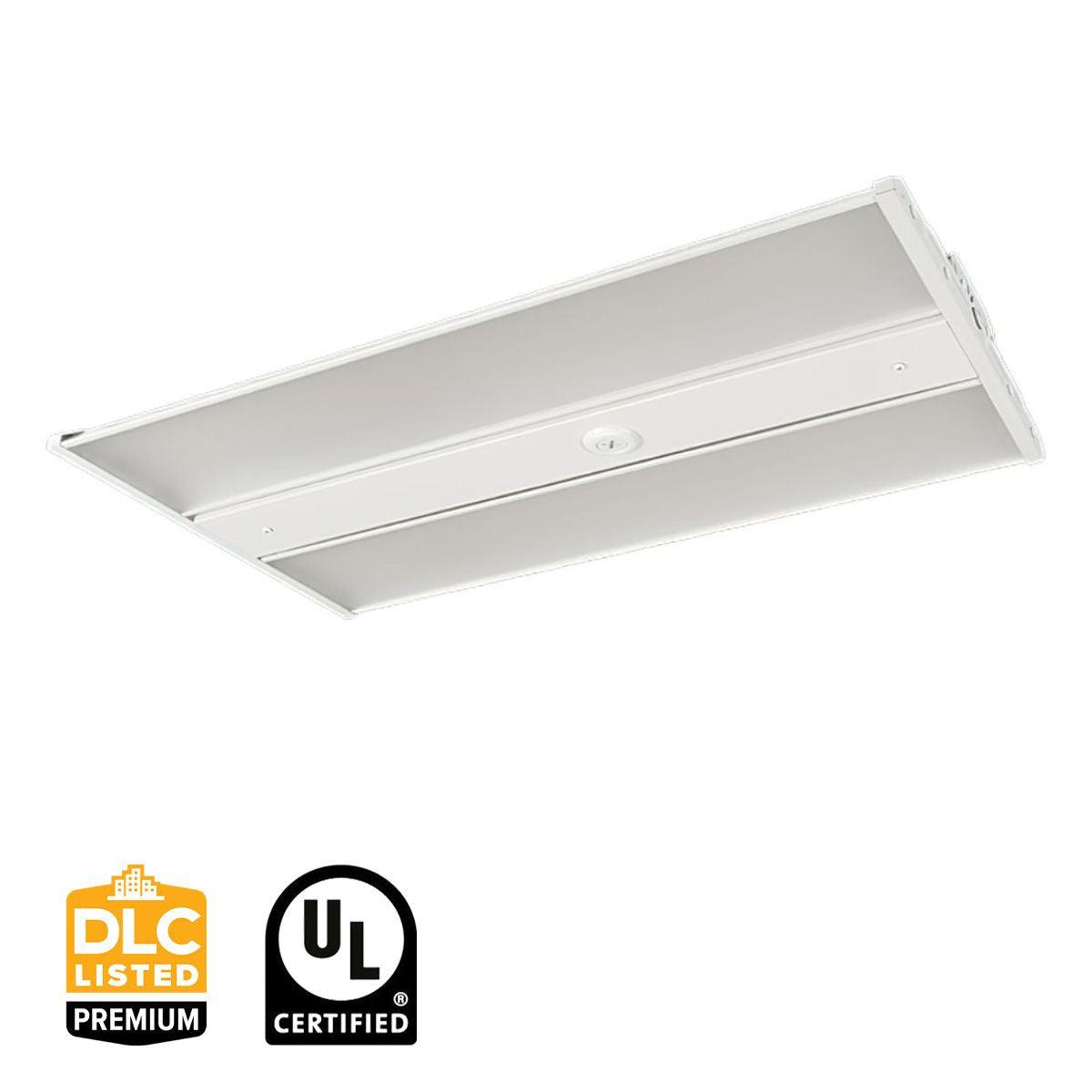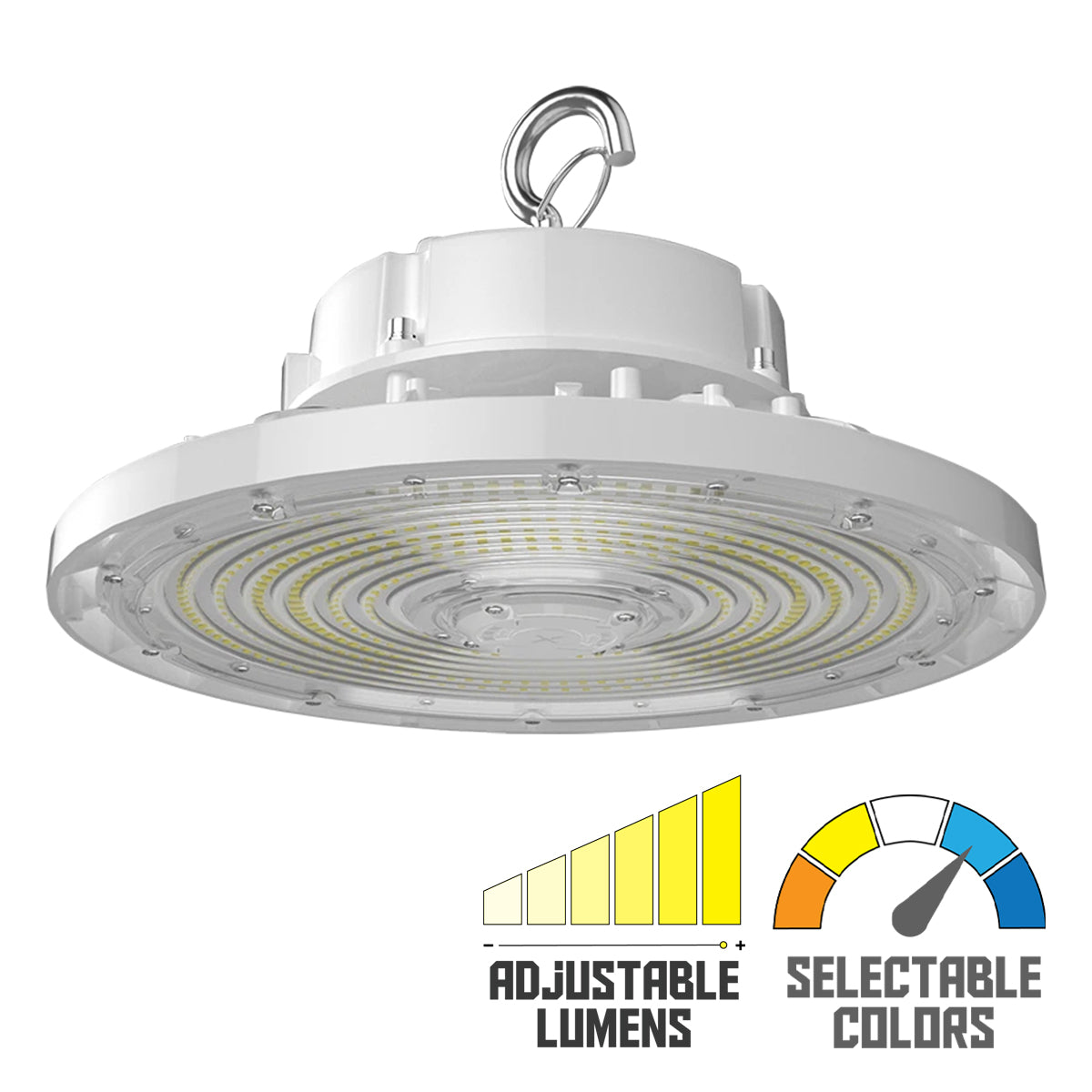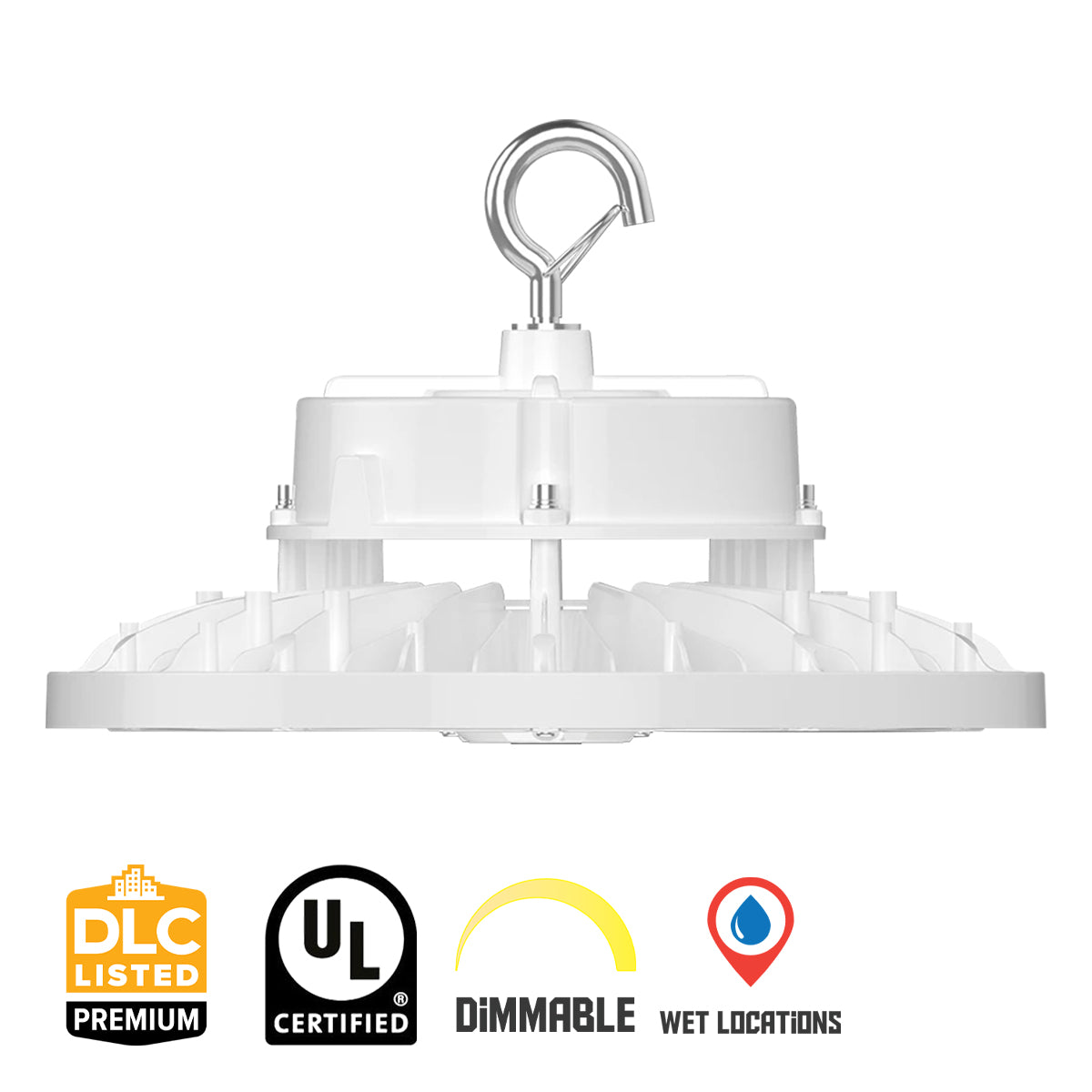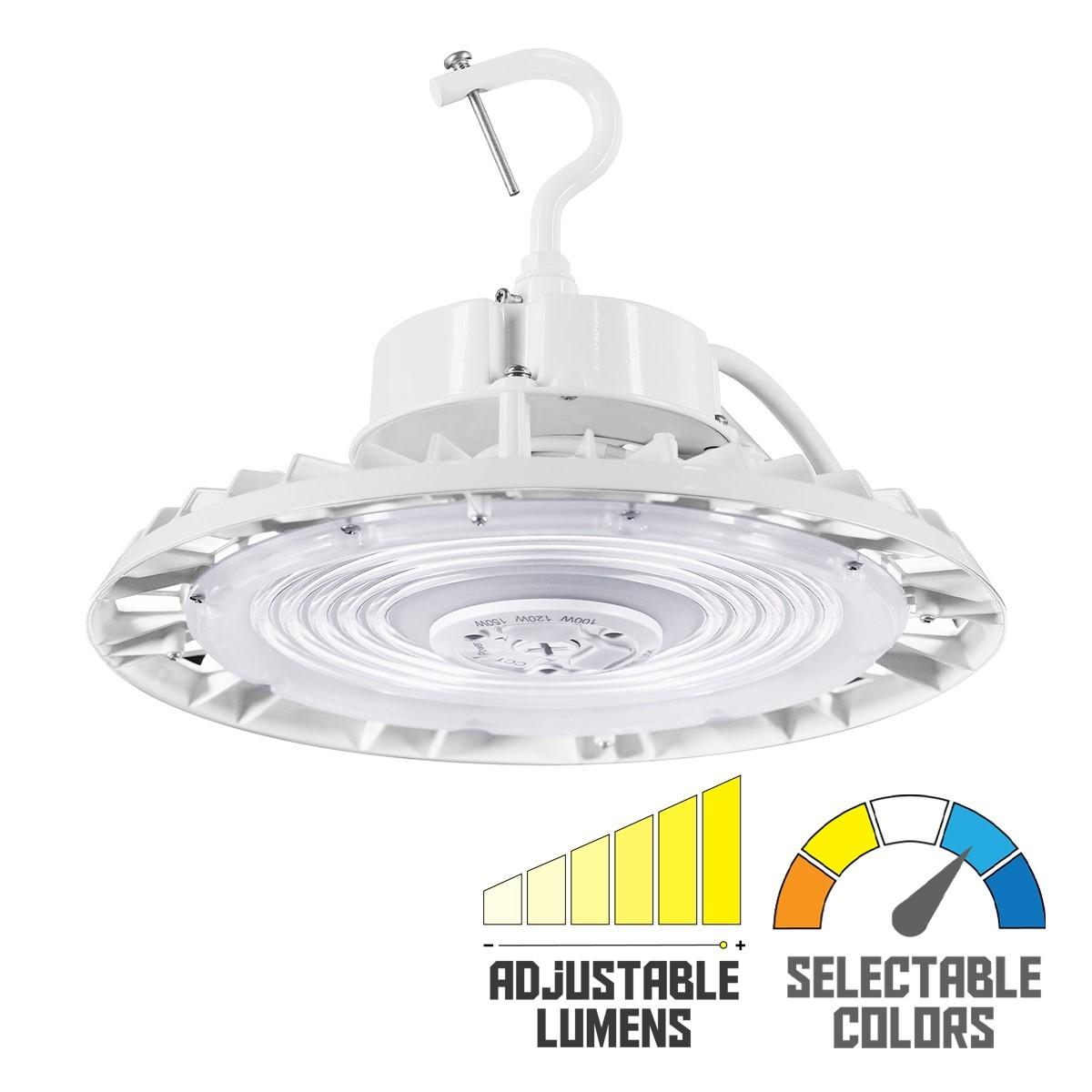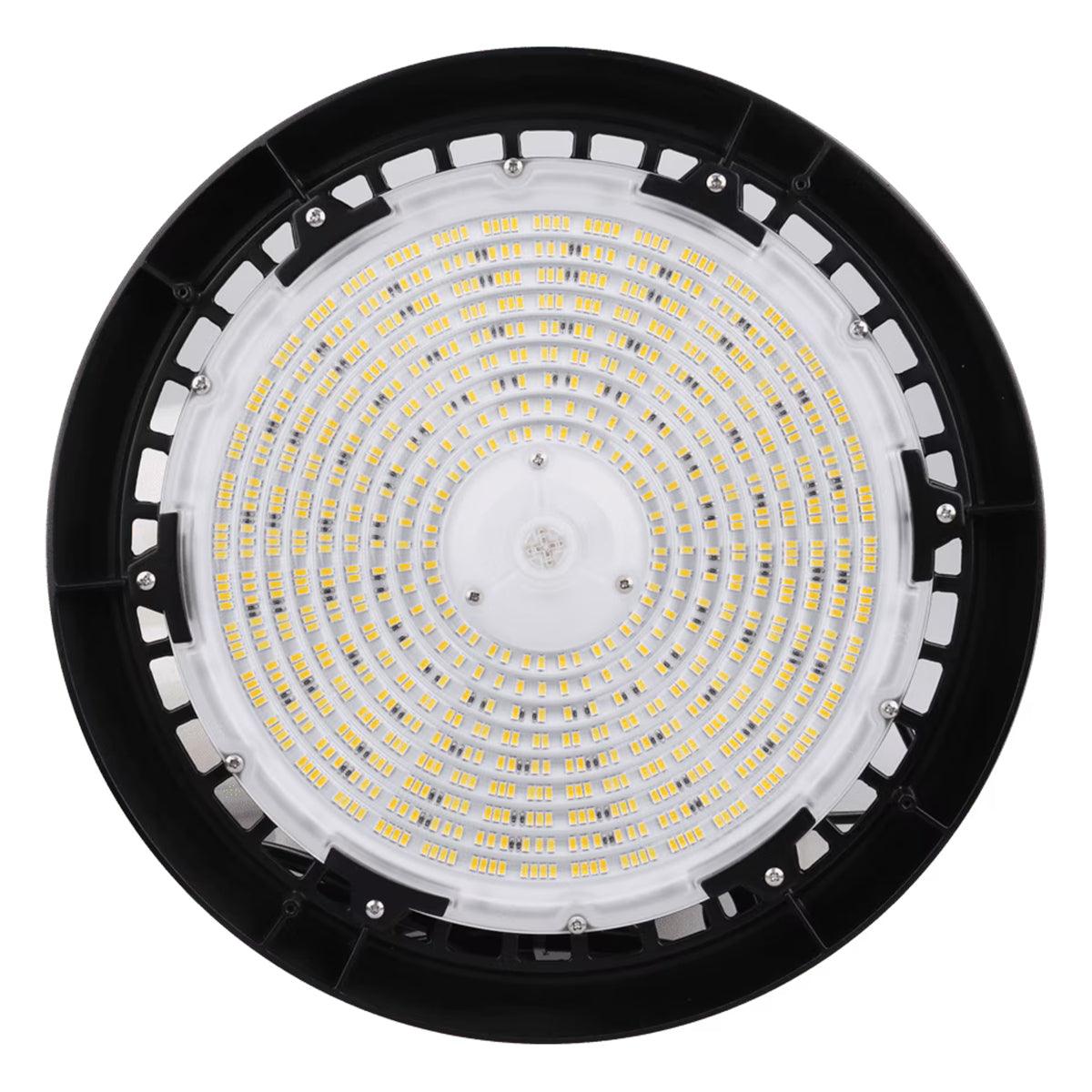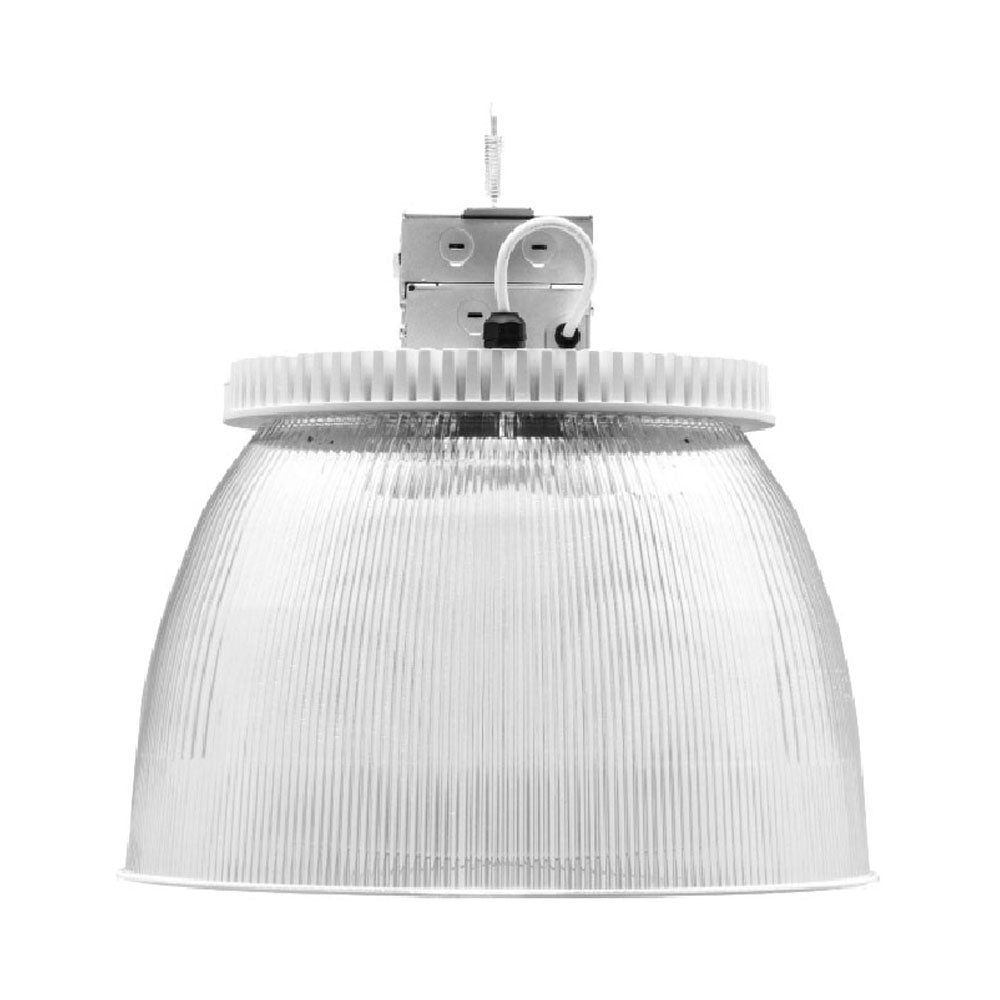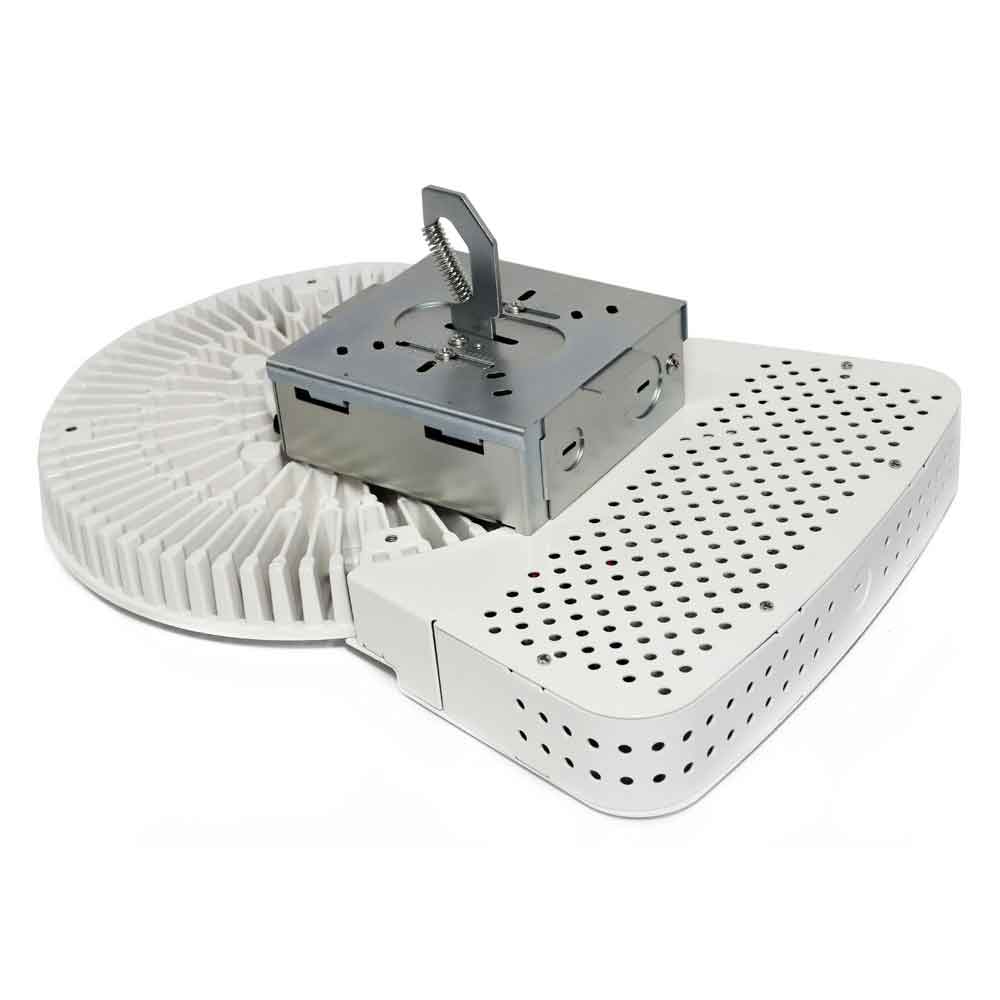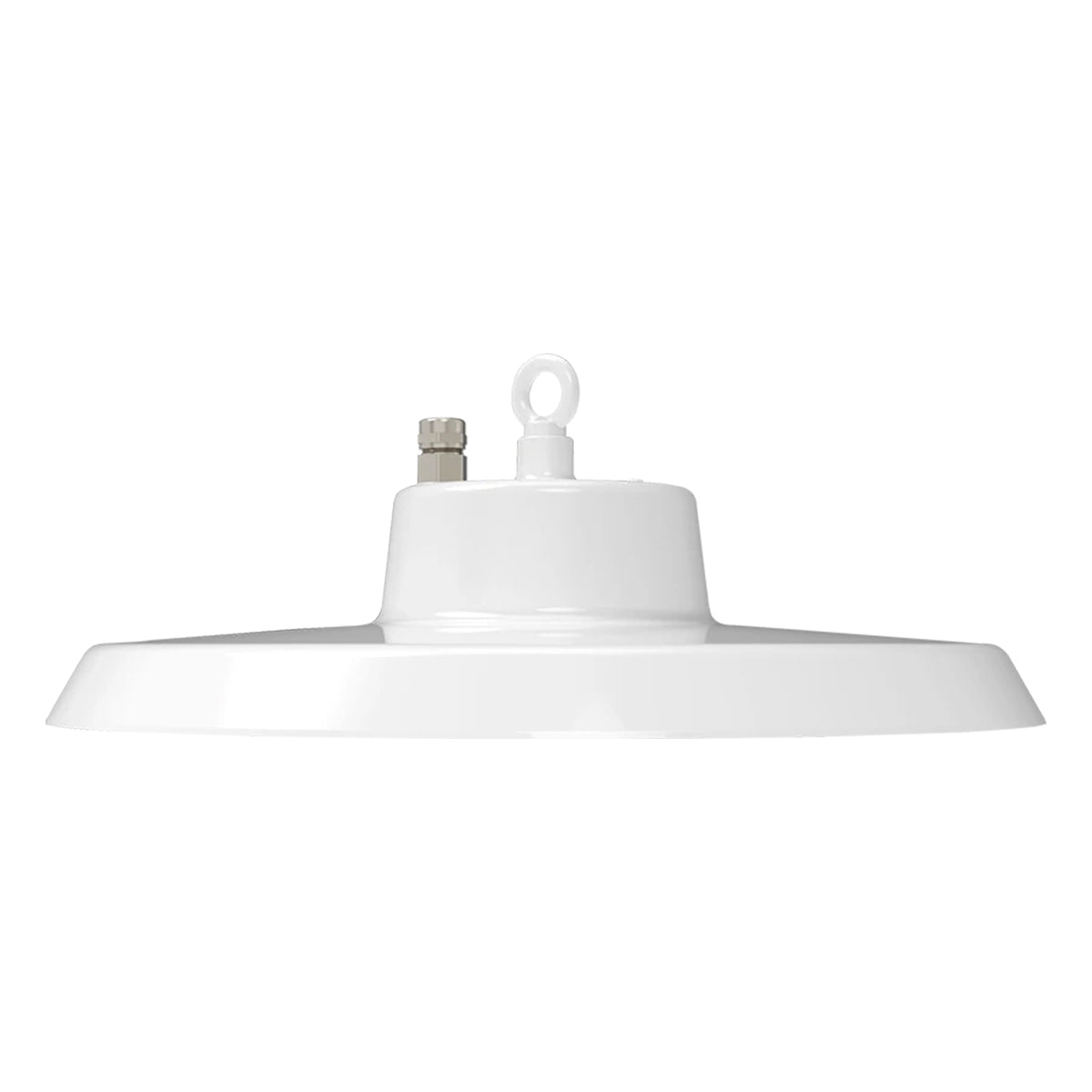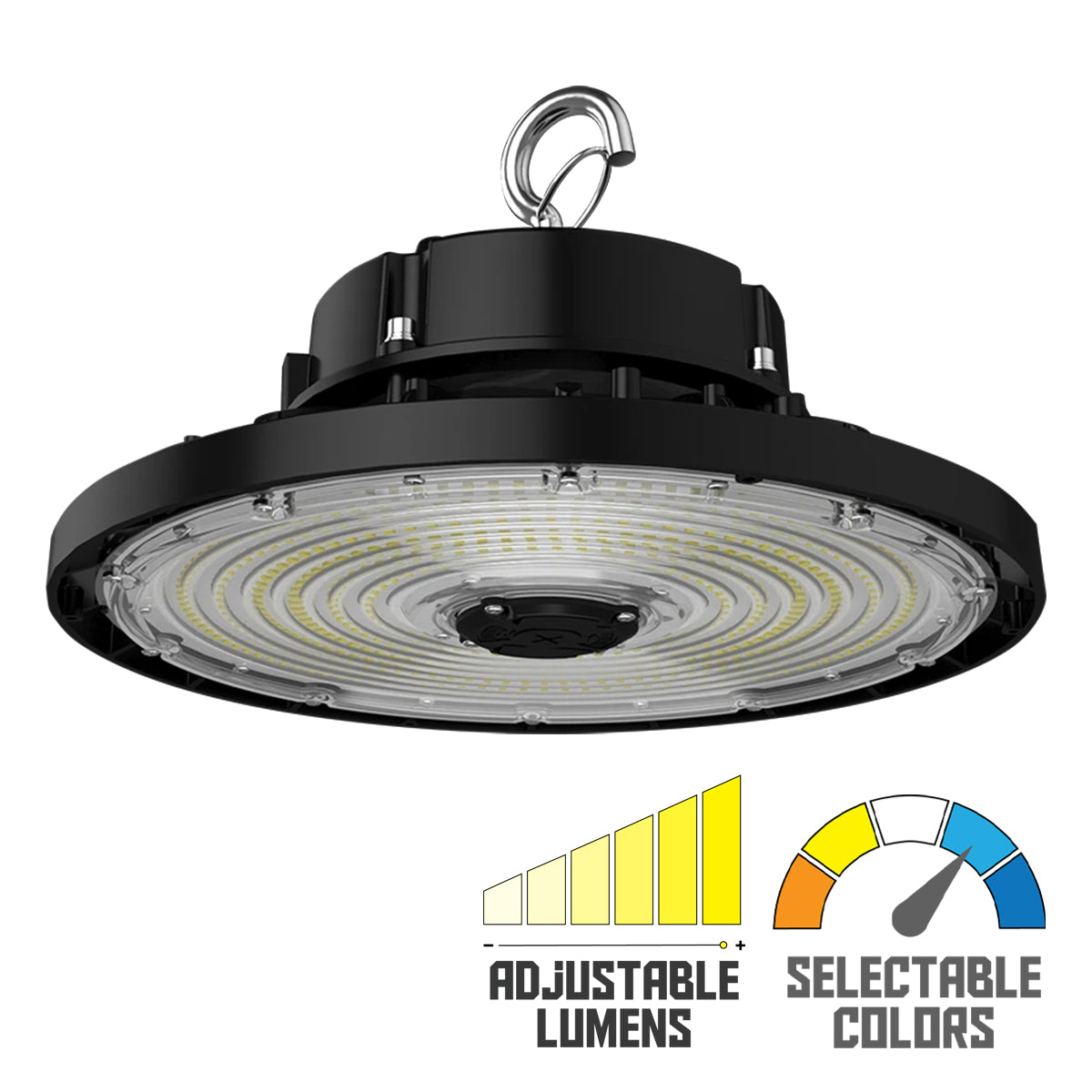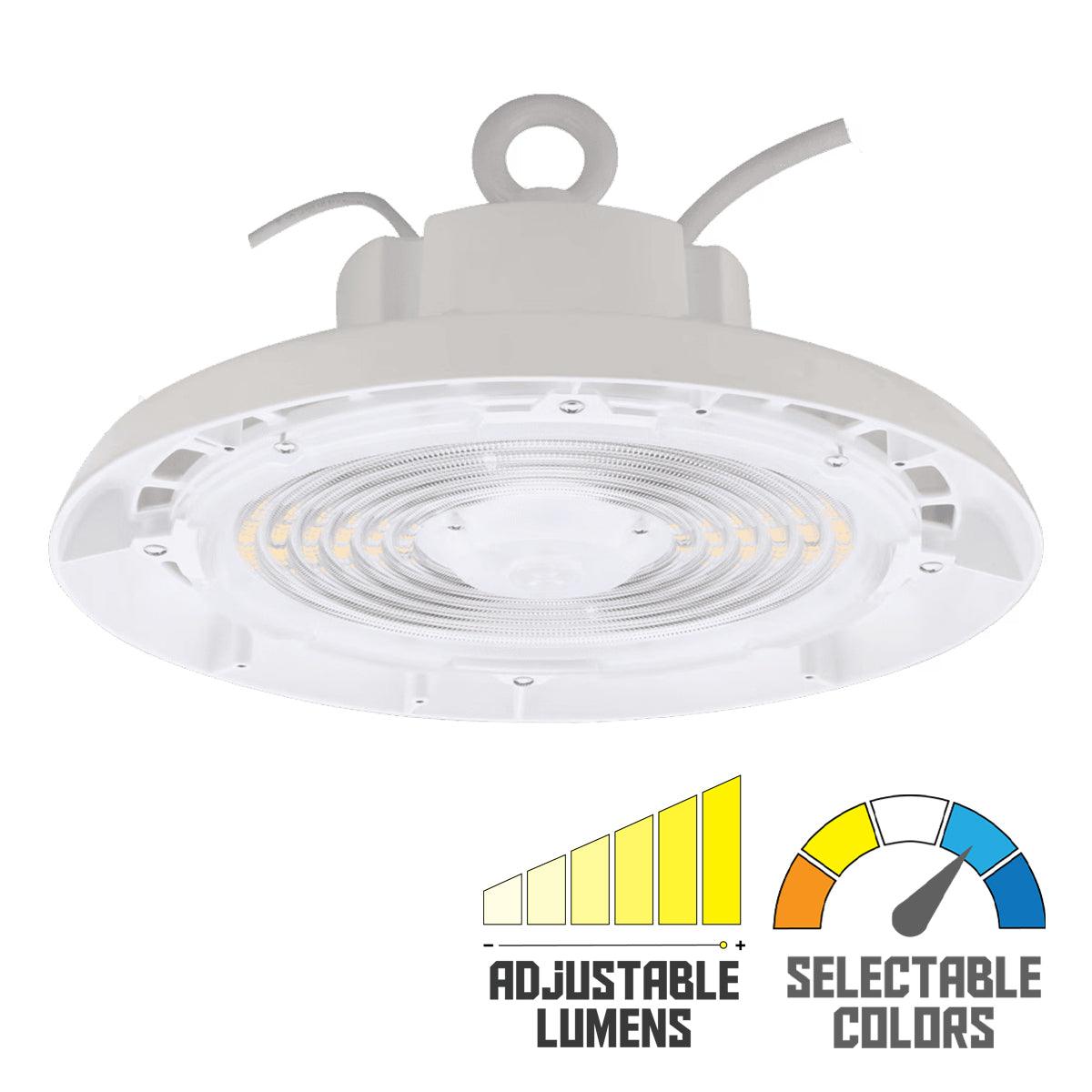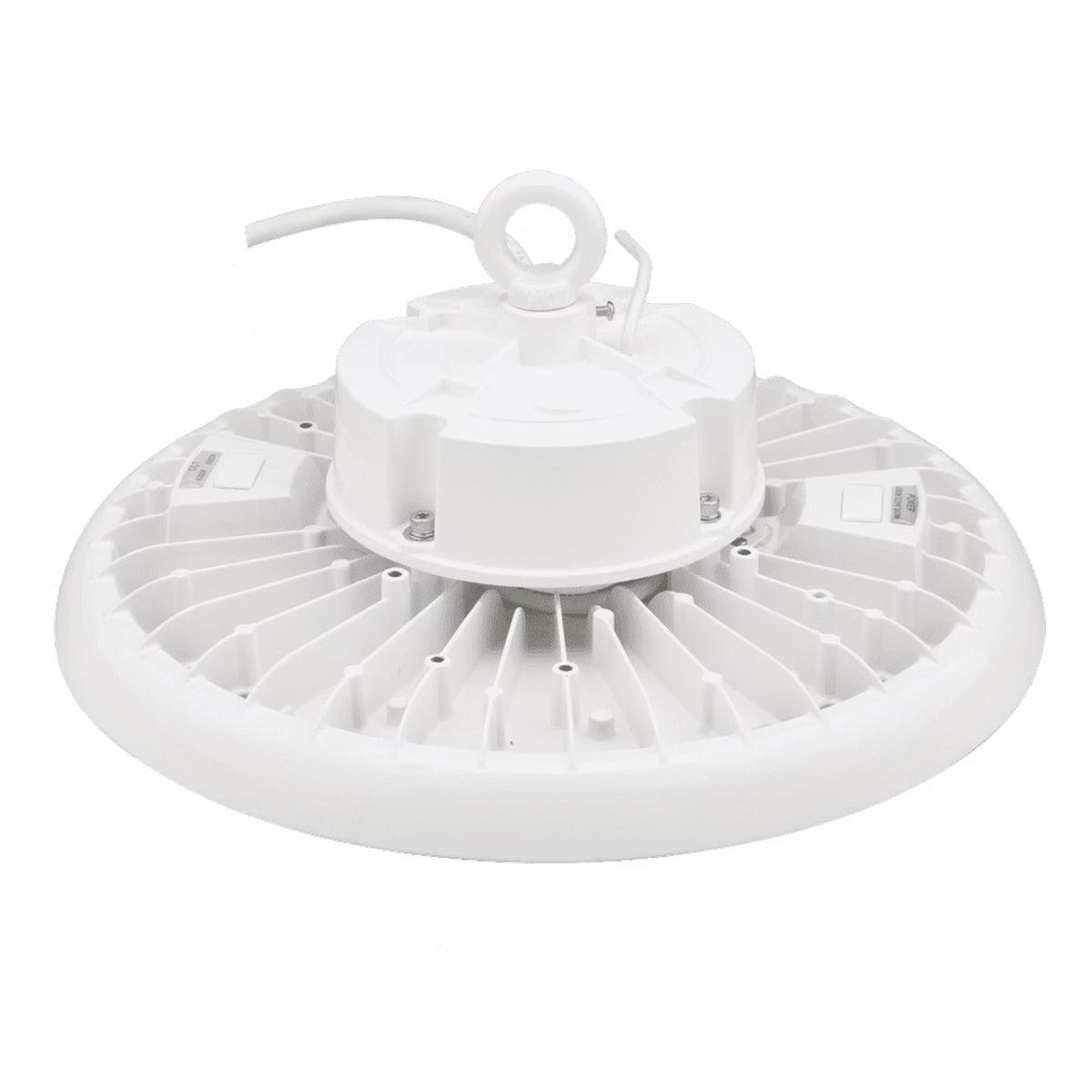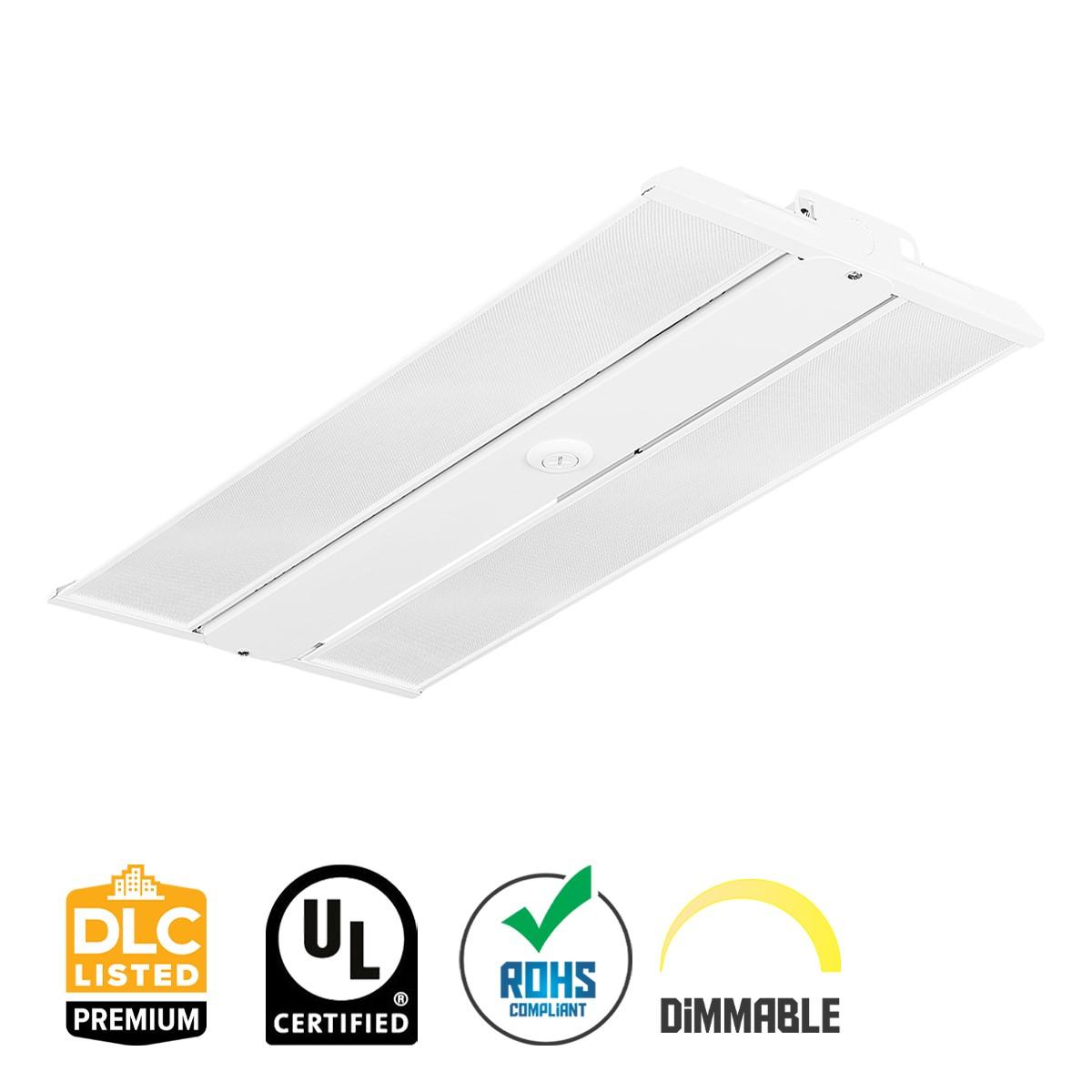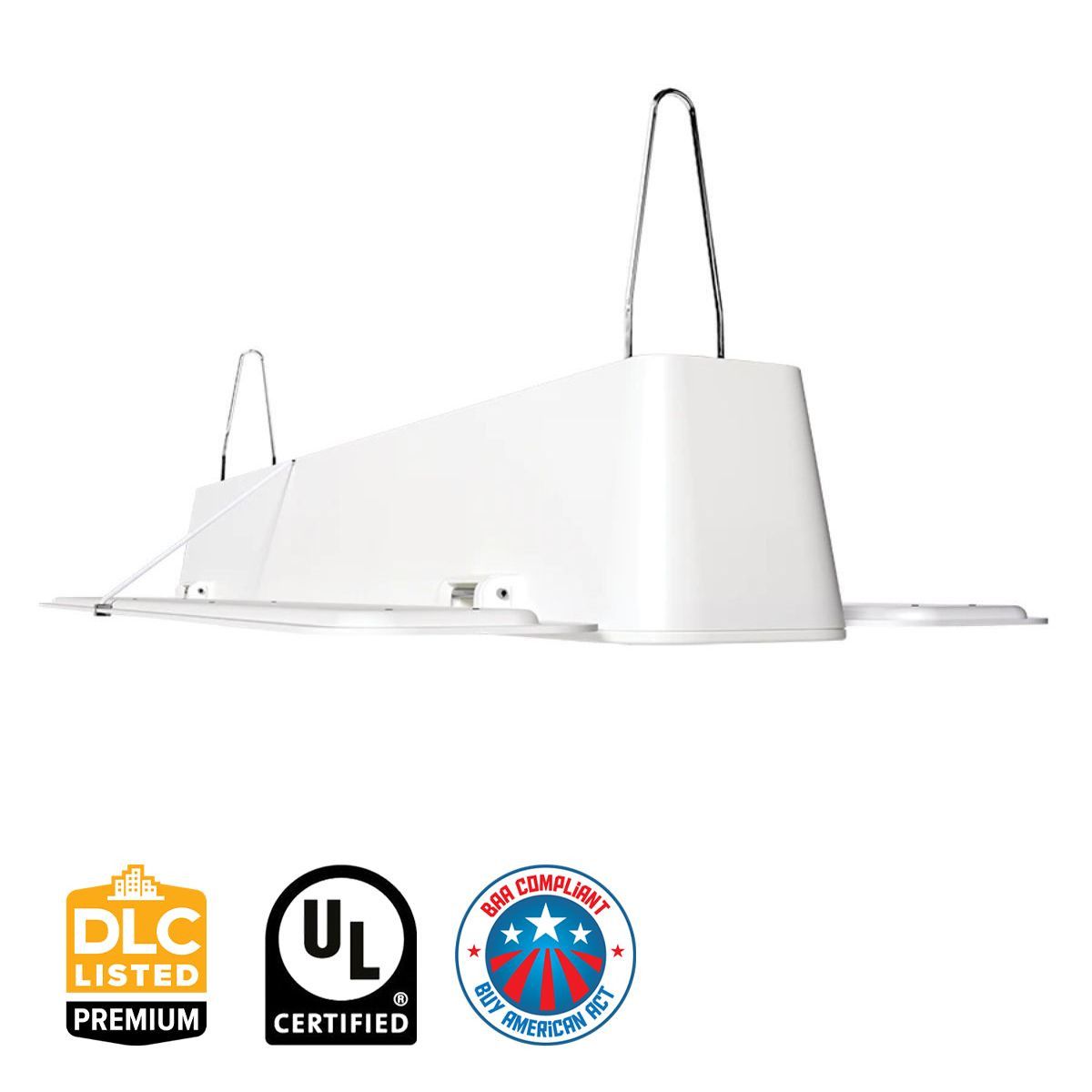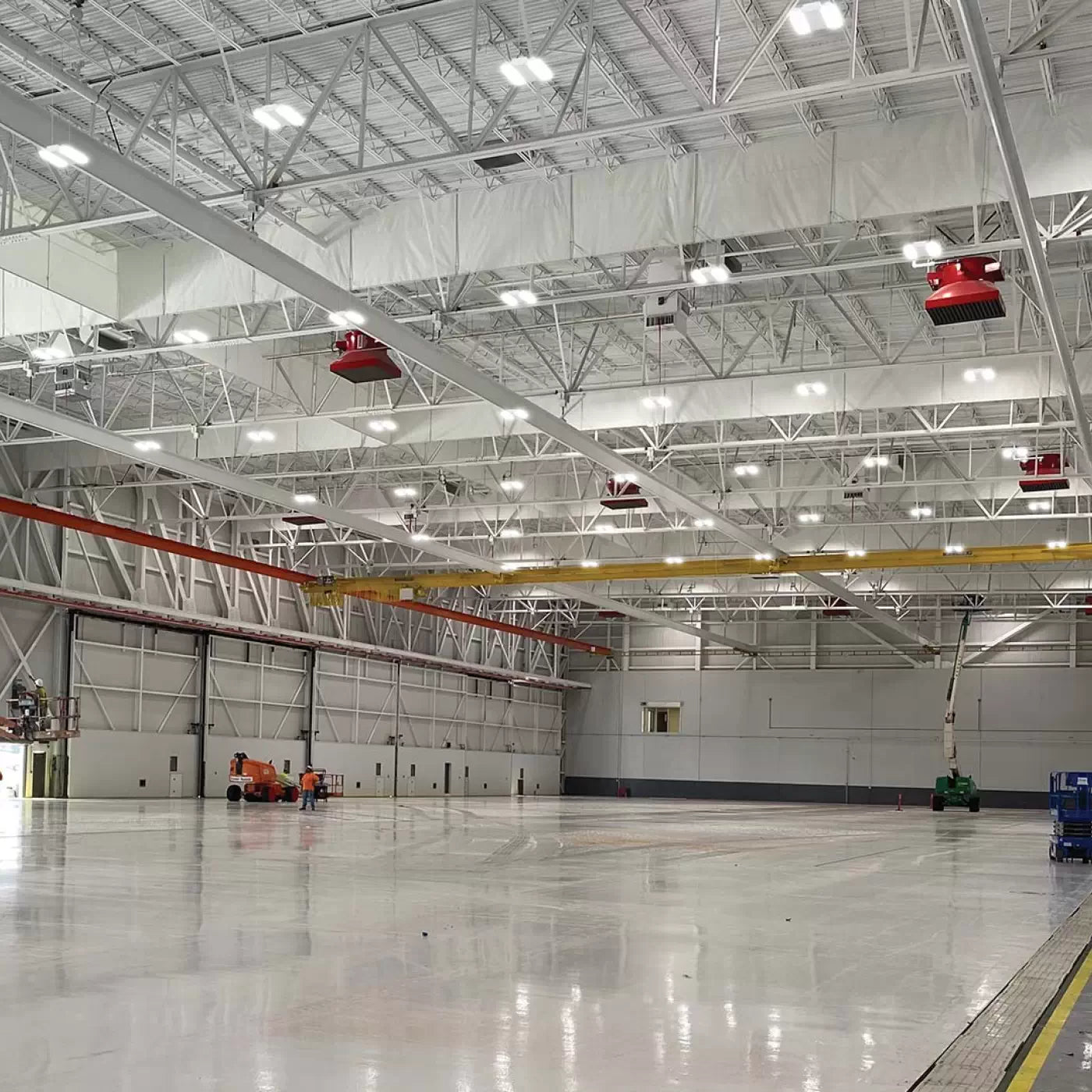High Bay LED Lights
BEST SELLERS
High bay lighting fixtures are designed to illuminate spaces with high ceilings, typically greater than 15 feet, providing a bright, uniform light that improves visibility and safety across various settings. The adoption of LED high bay lights underscores a growing recognition of their superior performance and energy savings compared to traditional lighting solutions. With their wide range of applications, from large-scale warehouses and gymnasiums to convention centers, the shift towards LED technology represents a significant leap forward in terms of energy efficiency and operational cost savings.
What is High Bay Lighting?
High bay lighting is a type of illumination specifically designed for use in large spaces with high ceilings, typically ranging from 15 to 40 feet or more. These lighting fixtures are essential in environments such as warehouses, industrial facilities, and large commercial spaces like gymnasiums and convention centers. The primary function of high bay lights is to provide powerful, uniform lighting that can cover vast areas both vertically and horizontally.
Characteristics of High Bay Lights
High bay lights are known for their high lumen output, which is necessary to adequately illuminate large and expansive areas. They are mounted high above the floor to ensure wide light distribution and to maintain clear, unobstructed light across the space. This setup is crucial for maintaining visibility and safety in environments where precise tasks are performed, or where machinery and equipment are operated.
Types of High Bay Lighting Fixtures
Traditionally, various lighting technologies have been employed in high bay settings, including metal halide (MH), high-pressure sodium (HPS), and fluorescent lights. Each type comes with its own set of characteristics:
- Metal Halide: These lights are favored in places requiring high color rendering and are commonly used in industrial and sporting venues. However, they have significant drawbacks such as a lengthy warm-up time and higher maintenance costs.
- High-Pressure Sodium: While HPS lights are more energy-efficient and have a longer lifespan than metal halides, they suffer from poor color rendering and also require a warm-up period.
- Fluorescent: Often used for their energy efficiency and lower initial cost, fluorescent lights contain mercury, posing environmental and health risks, and their performance can degrade with frequent switching on and off.
Advantages of LED High Bay Lights
LED technology has transformed high bay lighting by offering superior energy efficiency, better light quality, and longer lifespan. LED high bay lights provide bright, even lighting that reduces eyestrain and enhances visibility, making them ideal for both industrial and recreational facilities. These fixtures are also more environmentally friendly as they consume less power and do not contain harmful substances like mercury found in fluorescent lighting.
Installation and Maintenance
High bay lighting fixtures can be installed using various methods such as hanging from chains, using hooks, or attaching directly to the ceiling. The choice of installation often depends on the specific needs of the space and the type of fixture used. Maintenance of high bay lights involves regular cleaning and, depending on the technology, periodic replacement of bulbs or components. However, LED high bay lights typically require less maintenance due to their long lifespan and durability.
In summary, high bay lighting plays a pivotal role in industrial and commercial settings by providing necessary illumination for safety and efficiency. The evolution from traditional lighting solutions to LED technology offers significant benefits in terms of energy savings, improved light quality, and reduced environmental impact.
Types of LED High Bay Lights
High bay lighting is essential for illuminating large indoor spaces with high ceilings, such as warehouses, manufacturing facilities, and gymnasiums. These lights are designed to distribute light effectively over large areas and come in various types tailored to specific needs. This section explores the different types of high bay lights, focusing on UFO LED high bays, linear LED high bays, and high bay LED retrofit kits.
UFO LED High Bays
UFO high bay lights, named for their distinctive round, saucer-like shape, are particularly suited for environments where ceiling heights vary. These fixtures provide intense, high-intensity illumination with a wide beam angle, making them ideal for covering broad areas. They are equipped with advanced heat dissipation technology, which extends their lifespan and enhances performance. UFO LED high bays are versatile in installation, offering options such as hook mounts, ceiling mounts, and pole mounts. Their compact design without the need for a reflector allows for a clean, streamlined look in industrial settings.
Linear LED High Bays
Linear LED high bay lights are elongated fixtures that provide a focused and uniform light distribution, ideal for lighting up long aisles or corridors. These lights are particularly effective in places like retail spaces and large warehouses where clear visibility and light uniformity are crucial. The linear design not only ensures comprehensive coverage but also contributes to the aesthetic of modern industrial and commercial spaces. Linear high bays can be mounted in rows to enhance light consistency across extensive areas. They are also known for their energy efficiency, which can significantly reduce electricity costs.
High Bay LED Retrofit Kits
For facilities looking to upgrade from traditional lighting systems such as metal halide or high-pressure sodium lights, high bay LED retrofit kits offer a convenient solution. These kits allow existing fixtures to be converted to LED technology without the need to replace the entire lighting infrastructure. This option provides a cost-effective way to improve energy efficiency and lighting quality. Retrofit kits typically include LED bulbs, drivers, and heat management systems to ensure optimal performance and longevity.
Each type of high bay light brings specific advantages to different industrial and commercial environments. Choosing the right type depends on various factors including the specific lighting requirements, ceiling height, and the desired energy efficiency. By understanding the unique features and benefits of UFO LED high bays, linear LED high bays, and high bay LED retrofit kits, businesses can make informed decisions that result in better lighting solutions and energy savings.
Key Features of
High bay LED lights are distinguished by several key features that make them a superior choice for industrial and commercial lighting needs. These features include energy efficiency, long lifespan, high luminosity, and better color rendering. Each of these characteristics contributes to the overall performance and cost-effectiveness of high bay LED lighting solutions.
Energy Efficiency
One of the most significant advantages of LED high bay lights is their energy efficiency. These lights consume considerably less power compared to traditional lighting options such as high-intensity discharge (HID) lamps and fluorescent lights. Facilities using can experience up to 80% savings on electricity bills. This dramatic reduction in energy consumption not only lowers operating costs but also supports environmental sustainability efforts by reducing the carbon footprint.
Long Lifespan
LED high bay fixtures are renowned for their longevity. These lights can last from 50,000 to over 150,000 hours, significantly outperforming traditional lighting solutions like metal halide or high-pressure sodium lamps, which typically have shorter lifespans. The extended service life of LEDs reduces the need for frequent replacements, thereby saving on maintenance and labor costs over time.
High Luminosity
LED high bay lights are designed to deliver high luminosity, providing bright and uniform lighting that enhances visibility in large-scale environments. This feature is crucial in settings such as warehouses and manufacturing facilities where good visibility is essential for safety and operational efficiency. The improved illumination quality helps in reducing eye strain and improving the overall work environment.
Better Color Rendering
LED high bays offer superior color rendering compared to traditional lighting solutions. With a Color Rendering Index (CRI) often exceeding 90, these lights allow colors to appear more natural and vibrant under artificial lighting conditions. This quality is particularly important in environments where precise color differentiation is required, such as in retail settings or assembly areas. Higher CRI also enhances the aesthetic appeal of the space, making it more inviting and comfortable for occupants.
In conclusion, the key features of —energy efficiency, long lifespan, high luminosity, and better color rendering—make them an optimal choice for a variety of industrial and commercial applications. By integrating these lights into their facilities, businesses can achieve significant energy savings, improved lighting quality, and reduced maintenance costs, all of which contribute to a better bottom line and a reduced environmental impact.
Applications of High Bay Lights
LED high bay fixtures are utilized across a variety of settings, each benefiting from the specific features these lights offer, such as energy efficiency, longevity, and high-quality illumination. These environments include warehouses, manufacturing facilities, retail stores, and gymnasiums. Below is a detailed look at how serve each of these applications effectively.
Warehouses
In warehouse settings, high bay lights are essential for providing bright and even lighting that enhances visibility and safety. The nature of warehouse operations often involves the handling of goods and machinery, which requires clear visibility to prevent accidents and maintain efficiency. The energy efficiency and long lifespan of LED high bays also contribute to significant cost savings in such large spaces, which often operate around the clock.
Manufacturing Facilities
Manufacturing facilities benefit greatly from LED high bays due to their need for bright and reliable lighting to ensure the safety of workers and maintain productivity. These facilities often deal with intricate tasks that require precise lighting to avoid errors and workplace accidents. The robust design of meets the demands of these challenging environments by providing consistent and powerful illumination.
Retail Stores
Retail environments use to create an inviting atmosphere that enhances the shopping experience. These lights provide bright and attractive illumination, making products more appealing and easier to view. This type of lighting not only highlights merchandise but also influences the overall ambiance of the store, encouraging customers to spend more time and potentially increase purchases.
Gymnasiums
Gymnasiums require high-quality lighting to ensure the safety and performance of athletes and participants. High bay LED lights offer bright and uniform lighting that minimizes shadows and glare, which is crucial for both training and competitive environments. The ability to choose specific color temperatures and beam angles allows gymnasiums to optimize lighting for various sports activities, enhancing visibility and focus for both participants and spectators.
In each of these applications, high bays provide not only functional benefits but also contribute to energy savings and improved environmental performance. The adaptability of these lights to various commercial and industrial settings makes them a preferred choice for modern lighting solutions.
Choosing the Right High Bay Light
Selecting the right high bay LED light involves understanding various factors that impact performance and suitability for specific environments. Here, we discuss critical elements such as lumens, wattage, color temperature, and voltage, which are essential in making an informed decision.
Lumens
Lumens measure the total amount of visible light emitted by a source. The choice of lumens depends on the required brightness and the area's size where the lights will be installed. Common lumen ranges include:
- Low Lumens (4,000-20,000): Suitable for smaller to medium-sized areas or non-critical sections of manufacturing and commercial facilities.
- Medium Lumens (21,000-35,000): Ideal for larger operations like warehouses, offering a balance between illumination and energy efficiency.
- High Powered High Bays (40,000-50,000): Used in settings where maximum illumination is needed, such as sports stadiums or public venues.
Wattage
Wattage in LED lighting, while not the primary measure of light performance, still plays a role in energy consumption. It's important to select a wattage that provides adequate lumens while optimizing energy use. As LED technology advances, the lumens per watt ratio improves, meaning modern LEDs require less wattage to produce the same or greater light output compared to older models.
Color Temperature
Color temperature affects the light's appearance and its suitability for certain tasks:
- 5000K: Emits a cool white light, ideal for general tasks and settings requiring high visibility, such as warehouses and manufacturing sites.
- 4000K: Offers a natural light, preferred in environments where a warmer tone is beneficial, like some commercial spaces.
- 3000K: Produces a warm light, typically used in residential or hospitality settings, and less common in high bay applications.
Choosing the right color temperature depends on the specific needs of the space, such as enhancing focus or creating a particular ambiance.
Voltage
LED high bay lights typically operate within a standard voltage range of 120 to 277 volts, but some high voltage high bays operate at 480 volts. It’s crucial to verify the voltage compatibility of the lighting fixtures with the existing electrical infrastructure to avoid installation issues. Additionally, understanding the voltage requirements helps in selecting the appropriate circuit breakers and ensuring that the lighting system operates safely and efficiently.
By carefully considering these factors—lumens, wattage, color temperature, and voltage—buyers can select high bays that meet their specific needs, optimize energy usage, and enhance the functionality of their spaces.
As the landscape of industrial lighting continues to evolve with advancements in technology and growing emphasis on sustainability, LED high bay lights stand out as a pivotal component in modern lighting solutions. The shift toward LEDs, equipped with smart controls and improved durability, signifies a step forward in not only meeting but exceeding lighting requirements for various spaces. Should you require specialized assistance in selecting the precise LED high bay light that aligns with your specific needs, call Bees Lighting today at 855-303-0665 to discuss your lighting needs and find the perfect solution for your warehouse, ensuring you harness the full potential of LED technology for a brighter, more efficient future.
